
5 Best Watermakers for Sailboats

Last Updated by
Daniel Wade
June 15, 2022
With the right Watermaker, the ocean becomes an almost immeasurable supply of fresh and clean drinking water to keep you hydrated during your offshore sailing adventures.
Many sailors do spend a lot of their time and money on various parts of the sailboat including the sails, engine, electronics, and generators especially when preparing for long-distance voyages.
While there's absolutely nothing wrong with this, they often overlook one crucial part of general human survival: having an ample supply of fresh drinking water.
Whether you have freshwater drinking tanks on your sailboat or planning to cruise in areas where you can easily access clean drinking water, the hassle involved in having to come to the dock to fill the water tanks can be quite overwhelming.
This is exactly why you need to find the best watermakers for sailboats.
Like many other nautical technologies, watermakers have significantly advanced in the last few decades to become very efficient and more reliable. They're no longer a luxury on your sailboat but a necessity. Better still, watermakers have become relatively affordable and are meant to keep you hydrated as you explore areas that do not have clean and fresh drinking water.
In this article, we'll take a look at how watermaker systems work, highlight its benefits, and highlight the best sailboat watermakers on the market right now. At the end of this read, you should be able to choose the best watermaker for your sailboat.
Table of contents

Benefits of Having a Watermaker on Your Sailboat
The freedom and security that come with having full water tanks on your sailboat are of immense importance, especially if you're cruising in an area where fresh drinking water is hard to come by and quite expensive when you do. As such, having a watermaker aboard your sailboat is no longer a luxury like it used to be in the past. With a steady supply of fresh and clean water, your life on the sailboat will be a lot better. This is because you'll have enough clean water to drink, cook, wash, and shower, which is beneficial if you want to enjoy your sailing adventures.
Honestly speaking, many sailors do not actually need a watermaker. Well, if you're planning to sail just near the shores, then there's a chance that you can easily access fresh and clean water by the dock. But this can be limiting if you've been dreaming of going off the grid and sailing to some exotic and unknown places in the world.
With that in mind, a watermaker makes a lot of sense to most sailors. You won't have to worry about having to carry aboard gallons of fresh water for cooking and drinking during your voyage. You won't have to treat freshwater as a precious commodity that must last until you can refill at the next port. With a watermaker, you can simply go ocean crossing without worrying about running out of water.
A watermaker allows you to have a steady supply of fresh and clean water to keep everybody well-hydrated and healthy. You can clean the water anytime you feel like and all you have to do is replace the filter once in a while and you'll be good to go. In essence, a watermaker is probably one of the most important equipment to have aboard your sailboat, so installing it is of great importance if you're a serious sailor.
The Basics of Modern Marine Watermakers
Modern marine watermakers essentially follow the principle of reverse-osmosis to produce pure, drinking water from seawater. During this process and through very high pressure, seawater is forced through a semipermeable membrane that only allows freshwater molecules to pass through it but not salt, bacteria, or any other organic material. The newly made pure, drinking water is then piped to the sailboat's water tanks while the leftover (brine) is discharged overboard.
Even though marine watermakers may differ in the type of pump that's employed and how it is driven, this is one of the most important features in every watermaker. In most cases, water can be electrically pumped or powered directly off the boat's engine. If you have an AC generator or alternator on your boat, it would make much sense to use the AC output to drive the watermaker directly. You can also choose the DC-powered models if you rely on renewable energy from solar or wind. Alternatively, you can still go for AC-powered watermakers but you'll have to buy an inverter.
All in all, DC-powered watermakers are more efficient since they integrate a power-saving energy recovery system (ERS). You must, however, keep in mind that your energy consumption levels might be quite high if you're sailing in colder and saltier areas. This is because the water purification process might be a bit slower in such areas. As such, you should consider investing in a more high-powered watermaker system if you will be sailing in colder and saltier areas than if you're planning to sail more in warm and less salty areas.
As far as an engine-driven watermaker is concerned, you should mount the high-pressure pump on the engine so that it can be belt-driven using an automatic clutch. An engine-driven watermaker should be your first option if you want large quantities of fresh drinking water. This is more productive than AC or DC-powered watermakers. Even with a relatively small engine, this setup has an automatic regulator that constantly pumps the water. With that in mind, engine-driven watermakers are ideal if you want to reduce your energy consumption. To put it into perspective, an engine-driven watermaker can lower energy consumption by an enormous 80%, especially when compared with conventional AC or DC-powered watermaker systems.
How to Choose the Best Watermaker for Your Sailboat
There are many factors to consider when looking for the best watermakers for your sailboat. Here are the most important things to consider.
Your Freshwater Needs
One of the most important things to consider before spending your money on a watermaker is your freshwater needs. What quantity would be enough to keep you going on your sailing adventure? While the quantity might differ from one sailor to the other or from one boat to the other, you should consider the number of gallons that a particular watermaker can produce per day. This will help you in choosing the ideal watermaker; a model that will ensure that you never run out of water. Do not underestimate your water needs, especially if you're planning to sail with your children or if you're planning to stay on the boat for an extended period of time.
Do you have enough space on your vessel to accommodate the type of watermaker you're looking to buy? While most watermakers are designed to fit in the smallest of space, you should consider the actual size of the watermaker and find out whether you have enough space on your vessel to fix it.
Watermakers can run on electricity, renewable energy such as wind and solar (if you have them on your vessel), or both. When looking for the perfect watermaker, you should consider how to power it and whether or not the watermaker has low-energy consumption, which is definitely a great feature. Again, there are also engine-driven watermakers, so it's important to know exactly what you're going for.
Maintenance
Watermakers have a reputation for being difficult to maintain. Fortunately, the equipment and components have improved in the last few years so you should go for a model that's easy to maintain. You should use the watermaker in water bodies that look good, You should avoid using the watermaker in dirty harbors as you may have to change the filters every so often or even damage your watermaker altogether.
Best Watermakers for Sailboats
Let's take a look at the best watermakers available on the market right now.
The Ultra Whisper
Engineered by limited electrical options that can run on either DC or AC, THE Ultra Whisper by Sea Recovery is one of the best watermakers currently available on the market. In addition to being very quiet, this watermaker features an automatic operation that requires very minimal operator adjustment.
This watermaker is ideal for small powerboats and sailboats since it can serve as an efficient water supply. This model boasts about a 75% reduction in power consumption, especially when compared to other models.
- Smooth and quiet water production
- Can produce up to 2,280 liters per day
- Ideal for small boats
- It is energy efficient
- It might not be perfect for large boats
Echotec Watermaker
If you want a watermaker model that can produce 60 liters per hour flawlessly and with no maintenance apart from changing the filters, look no further than the Echotec Watermaker. This model is designed for ultra-reliable performance and easy customer installation.
This watermaker is made from high-quality components that can withstand the continuous harsh marine environment, making it one of the most durable watermakers on the market. This is essentially a series of modular watermakers ranging from 12-volt to 24-volt DC-powered models. They bring forth energy efficiency, a computerized energy recovery system, and ultimate reliability to ensure that you never run out of fresh drinking water while out there on the sea.
- Energy efficient
- Cost-effective
- Comes with a very low speed
- Not ideal for large boats
Spectra Katadyn PowerSurvivor
As a compact and energy-efficient watermaker, the Spectra Katadyn PowerSurvivor is arguably the most affordable watermaker currently available on the market. We are talking about a model that only requires 4 amps to desalinate water for your sailboat. It can produce 1.5 gallons of fresh drinking water per hour, which is an excellent return for a watermaker of its size.
It is also one of the most portable watermakers around. You can choose to either install it permanently or temporarily in case you want to take it somewhere else. This portability is also essential if you're looking for a space-saving model that can fit in the smallest of compartments. Its simple but rugged design is essential in ensuring that it can perform at its best even in harsh marine conditions. In terms of its power capabilities, this is the only model on the market that will convert to a hand-operated system or manual power if there's a power shortage.
- Portable and lightweight
- Rugged design to withstand harsh marine environments
- Efficient and reliable
- Can revert to manual power if there's a power shortage
- Perfect for off-grid sailing
- Gasoline or diesel can easily damage the semi-permeable membrane
Village Marine - Little Wonder Series
Whether you're looking for a watermaker for your small sailboat or looking for a watermaker that can efficiently serve those huge yachts, the Village Marine Little Wonder Series provides everything. This model is meant for experienced sailors who are looking for various capacity options. This watermaker weighs just about 69 pounds but can produce nearly 180 gallons of fresh drinking water each day.
Designed with a low RPM high-pressure pump, this model remains one of the most efficient and economical watermakers on the market. That's not all; this watermaker is designed with corrosion-resistant features and is one of the most serviceable watermakers in the game. It is reliable, quiet, and portable; all factors that make a watermaker great.
- Easy to operate
- Corrosion-resistant
- Easy to maintain
- Quiet and versatile
- It doesn't have automatic adjustment controls
Ventura 150 Watermaker
This is one of the most versatile watermakers on the market. It can use both electricity and renewable energy. This model is engineered to be lightweight and energy-efficient and its compact and modular design makes it a great option if you're looking for a watermaker that's easy to use and install in confined spaces.
The Ventura 150 watermaker is highly efficient as it can produce over 6 gallons of water an hour, which makes it quite perfect for small vessels. This sailboat watermaker features a controller that allows you to operate and monitor the device remotely. It also has the auto store button that will automatically flash the system after every five days.
This watermaker is quiet and surprisingly compact despite its ability to produce about 150 gallons of water per day. It also gives you the option of going for the automated manual or manual model.
- Very versatile
- Can use both electricity and renewable energy power
- It is smooth and quiet
- It is compact and lightweight
- The manual model has analog controls
To this end, it's easy to see that having an ideal watermaker aboard your vessel is one of the first crucial steps towards being self-sufficient and sustainable. With a watermaker, you'll be able to access fresh drinking water at all times when sailing even in far-flung places. Most of these models are well-constructed and incorporate some of the best technologies that make them efficient, reliable, and easy to install, use, and maintain.
So when it comes to choosing the best watermaker for your sailboat, it may all come down to what is ideal for you in terms of energy consumption, efficiency, the quantity of water produced, among many other things. With an ideal watermaker, you can remain off the grid for as long as you want without ever worrying about running out of water and this is of great importance in enjoying your sailing adventures.
Related Articles
I've personally had thousands of questions about sailing and sailboats over the years. As I learn and experience sailing, and the community, I share the answers that work and make sense to me, here on Life of Sailing.
by this author
Sailboat Upgrades
Most Recent

What Does "Sailing By The Lee" Mean?
October 3, 2023

The Best Sailing Schools And Programs: Reviews & Ratings
September 26, 2023
Important Legal Info
Lifeofsailing.com is a participant in the Amazon Services LLC Associates Program, an affiliate advertising program designed to provide a means for sites to earn advertising fees by advertising and linking to Amazon. This site also participates in other affiliate programs and is compensated for referring traffic and business to these companies.
Similar Posts

How To Choose The Right Sailing Instructor
August 16, 2023

Cost To Sail Around The World
May 16, 2023

Small Sailboat Sizes: A Complete Guide
October 30, 2022
Popular Posts

Best Liveaboard Catamaran Sailboats
December 28, 2023

Can a Novice Sail Around the World?
Elizabeth O'Malley

4 Best Electric Outboard Motors

How Long Did It Take The Vikings To Sail To England?

10 Best Sailboat Brands (And Why)
December 20, 2023

7 Best Places To Liveaboard A Sailboat
Get the best sailing content.
Top Rated Posts
Lifeofsailing.com is a participant in the Amazon Services LLC Associates Program, an affiliate advertising program designed to provide a means for sites to earn advertising fees by advertising and linking to Amazon. This site also participates in other affiliate programs and is compensated for referring traffic and business to these companies. (866) 342-SAIL
© 2024 Life of Sailing Email: [email protected] Address: 11816 Inwood Rd #3024 Dallas, TX 75244 Disclaimer Privacy Policy

7 Best Sailboat Watermakers For Liveaboards 2024
If you’re a liveaboard sailor looking for the best sailboat watermaker then you’ve come to the right place. In this blog post, we’ll take a look at some of the best watermakers on the market and show you how they can help make your sailing experience more enjoyable.
There’s nothing quite like the freedom of sailing on the open water. If you’re a liveaboard sailor, though, you know that keeping your boat stocked with fresh water can be a challenge. That’s where sailboat watermakers come in handy.

Not only do they produce fresh water for drinking and cooking, but they also help keep your boat clean by providing water for showers and dishes.
In this blog post, we’ll take a look at the best sailboat watermakers available on the market today. We’ll discuss the pros and cons of each model so that you can make an informed decision before purchasing one for your boat.
So, whether you’re looking for a compact unit that is easy to install or a high-performance model that can handle large volumes of water, we have something for you. Keep reading to learn more.
How do marine watermakers work?
What are the benefits of having a watermaker on your sailboat.
- How do I choose a sailboat watermaker?
How big a water maker do I need?
How much does a sailboat watermaker cost, how much power does a watermaker use, how much space does a marine watermaker take up, maintaining your sailboat watermaker, the best sailboat watermakers for liveaboards.
As an Amazon Associate, we earn from qualifying purchases. We also earn from other affiliate programs. This means we may receive a small commission on products purchased through our links at no extra cost to you.

Marine watermakers are devices that convert salt water into fresh water, making them an essential tool for sailors and boaters. But how do they work?
At the heart of every marine watermaker is a reverse osmosis membrane. This is a thin, semi-permeable film that allows water molecules to pass through, but blocks out larger molecules like salt.
To create freshwater, salt water is forced through the membrane under high pressure. This process is known as reverse osmosis, and it leaves the salt behind in the brine stream. The freshwater that comes out of the other side is then collected and stored in tanks.
Marine watermakers are powered by either electricity or a diesel engine, depending on the size of the unit. Some small portable units can even be powered by a car battery.
You will probably want a pretty decent battery bank and solar or wind setup to power your watermaker. By far the easiest solution is to get a reliable, drop in battery. We highly recommend BattleBorn’s lithium batteries which is what we use to power our watermaker.
⚡ Check out BattleBorn batteries here

If you’re thinking of outfitting your sailboat with a watermaker, you’re in for a treat. Adam and I put off buying one for two years, as we weren’t sure it would be worth the big investment. But after a year in the Cyclades where finding free town quays with water was near impossible, we decided to bite the bullet and commit.
It’s the one thing we wish we’d done sooner. A sailboat watermaker has literally changed our lives at sea and we couldn’t be without one now.
Not only will you have a reliable source of fresh water, but you’ll also be able to enjoy extended stays at sea. Here are just a few of the benefits we’ve found of having a watermaker on your sailboat:
Perhaps the most obvious benefit of having a marine watermaker is that you’ll never have to worry about running out of fresh water. Whether you’re sailing around the world or just spending a few weeks cruising the coast, a watermaker will give you the peace of mind that comes with knowing you have an unlimited supply of fresh water.
Obviously, fresh drinking water from the watermaker is great, but it also means we don’t worry about taking a shower or the huge amounts of washing up caused by certain meals or having people over for dinner!

In addition to providing an endless supply of fresh water, a watermaker can also help extend your cruising range. By making your own water, you won’t have to make as many stops to restock your tanks. This means you can stay out on the open water for longer periods of time and explore more distant ports. It also saves a lot of money on marinas and a lot of trips to beach showers!
Finally, having a watermaker onboard can be a real lifesaver in an emergency. If your boat is disabled and you’re stuck at sea, having a way to make fresh water can mean the difference between life and death.
How do I choose the best sailboat watermaker?

There are a few things to keep in mind when choosing a watermaker for your sailboat. There is no one size fits all when it comes to choosing the perfect watermaker for you, so take some time to read the pros and cons of each model before you commit!

If you’re just cruising around the local waterways, you can get away with a smaller unit and top up your tanks with water from the dockside. But if you’re planning on venturing out into the open ocean, you’ll need a larger unit that can produce more water.
You’ll want to take into consideration the amount of people you’re likely to have onboard. Adam and I find out Rainman naked 12V system keeps up with our needs just fine, but after taking on two more members of crew we quickly ran out of water and struggled to keep up with the new demand.
You should also track your water usage habits for a bit to see how much water you use on a daily basis. If you can’t live without daily long showers, or you need fresh water to wash down the boat regularly, or you have fresh water flushing toilets then you’ll obviously be using a lot more water than others.
The amount of water you use when you have a watermaker is likely to increase a little from your needs now, as you’ll be a little less careful with it. Factor this into your decision!

Like everything in sailing, you can spend as much or as little as you want on a watermaker. There are even some people who have successfully made their own watermaker and only spent money on the parts (some of which you can source second-hand).
If you aren’t a wizard with things like that though, you’re going to be looking at spending a decent amount of money on a sailboat watermaker. On average, they cost around £3000-£5000 for a watermaker for a cruising sailboat (around 40ft).
You can spend more like £10,000 on a watermaker for a larger boat, and you can spend less on a second-hand marine watermaker or a DIY one.
We’ve put together a guide to help you work out your needs based on what you use aboard.
Different brands of watermakers are more efficient than others, but from our own experience and that of others we’ve talked to, it takes around 10 Watt-hours to make a litre of water – i.e. about 0.8 Amp-hours from a 12-volt battery.
Things like the chemistry of your battery bank, the length of your cable runs, and even the temperature of the sea, can all make a difference to the amount of power you’ll need to make a certain amount of water, but this is a rough average.
We’ve got a guide on working out how much power you’ll need.

A marine watermaker is a very useful tool, but it’s not exactly small. In fact, depending on the model, a watermaker can take up quite a bit of space.
The average unit is about the size of a small freezer, and some models are even larger. Given that most boats are fairly limited in terms of space, this can be a bit of a problem.
The good news is that there are now several manufacturers who offer compact watermakers that are designed to take up less space. These units are often smaller than a standard coffee maker, making them much easier to find a spot for on your boat.
We’ve included some great options for smaller boats below.

Like any piece of equipment, a watermaker requires regular maintenance. Fortunately, there are some simple steps that you can take to keep your watermaker in good working condition.
First, be sure to check the filters on a regular basis. Not only will this help to ensure that your water is clean, but it will also help to prolong the life of your watermaker.
Second, be sure to check the seals and o-rings for leaks. These are essential for keeping your watermaker operating efficiently, and any leaks can lead to costly repairs.
Finally, be sure to perform a yearly “spring cleaning” by flushing the system with fresh water.
By following these simple tips, you can keep your watermaker in good working order for years to come.
You should also account for the fact that parts are bound to break and need fixing or replacing. Most watermakers come with proprietary parts which make them a pain to fix in remote places, but there are a few that take non-proprietary parts. We would recommend these to anyone planning a larger cruising ground.
#1 Rainman naked 12V Marine Watermaker

The Rainman naked 12V watermaker is a great option for anyone looking for a compact, efficient way to produce fresh water.
The unit is simple to set up and use, and it produces up to 30 litres of fresh water per hour for a smaller unit, or up to 140 litres per hour for a larger one.
One of the main reasons we were drawn to Rainman watermakers is that they use all off-the-shelf, standardised parts. If your Rainman breaks down, it almost doesn’t matter where in the world you are – you’ll likely be able to get standardised spares in the nearest major city. For any liveaboards hoping to circumnavigate this should be an important consideration.
Installation was really very straightforward. End-to-end it took two days to install and test the unit, plus an extra day to get the autoflush set up.
We were pleasantly surprised to find that the unit came with almost everything we needed to install it. We were expecting to supply our own hoses, sundries, etc. but Rainman supplies everything you need.
Whether you’re sailing around the world or just weekends on the lake, the Rainman naked 12V watermaker is a great way to ensure you have access to fresh, clean water.
Check out our full Rainman watermaker review for everything you need to know.
#2 Spectra Newport 400c Watermakers for Sailboats
Spectra watermakers have an excellent reputation among the sailing community and you can’t go wrong with one of their marine watermakers for your sailboat.
They make a range of different sailboat watermakers to suit different needs and sizes of boat, from hand-operated desalinators that can make 6 gallons a day to their largest system that produces 20,000 gallons of fresh drinking water per day.
The Newport 400c model operates on as little as 4 watts per liter, so you can run it on a small generator, solar, wind, or even just straight off the batteries. It’s a great option
The Spectra Connect system means you can operate and monitor your watermaker from a remote device, and it has lots of other clever features including a fill tank mode and suggested maintenance intervals.
You can choose the speed operation on this sailboat watermaker for maximum flow or maximum efficiency depending on your power management onboard. This is a great ‘all bells and whistles’ watermaker that takes the guesswork out.
#3 Spectra watermaker Ventura Series
As with the Newport 400c, Spectra ensure these watermakers are built to last and they have a really great reputation.
The Spectra watermaker Ventura series is designed to be energy-efficient and lightweight and is the perfect watermaker for smaller spaces.
It produces 24 litres an hour, which is less than the Rainman model but still enough for a couple living aboard a small sailboat if you’re conservative with water usage.
You can also opt for a warm water model that will produce slightly more water per hour and is the same size (but you’ll need to be sure your cruising area is only warm water!)
#4 The Ultra Whisper
The Ultra Whisper by Sea Recovery is one of the best watermakers out there for smaller boats, or boats not set up with adequate power to run one of the larger units.
It can run on either AC or DC and claims a 75% reduction in power consumption compared to the other products listed here. It’s also super quiet, which if you’ve run a watermaker before, is actually a huge bonus!
This is a small but perfectly formed piece of equipment that will enable you to make water with the smallest power setup, but obviously, on the downside, you won’t produce as much water so you’ll need to be careful with your consumption onboard.
Sea Recovery has more watermaker models on offer in a wide variety of size and capacity options. There’s even a really tiny version that measures only 2-3 cubic feet for sailboats that can’t compromise on space.
#5 Village Marine – Little Wonder series
Village Marine is another of the most popular marine watermaker brands and has a reputation for making reliable and efficient sailboat watermakers in a range of different models to suit different needs.
The Little Wonder series is one of the smallest (the reason for the name) and weighs only 69 pounds with the ability to produce 180 gallons of freshwater per day.
It has a low RPM high-pressure pump in a modular design, which means you can install it in different parts of the boat to maximise your space. This is really handy for smaller sailboats.
Installation is quick and easy, and a competent DIYer can do it. It is anti-corrosive and as a bonus, is also quiet to run!
This is one of the best watermakers on the market for smaller sailboats, and should last a long, long time.
#6 Village Marine – LW Watermaker Series for bigger boats
For anyone out there looking for a serious sailboat watermaker for a bigger boat, Village Marine has something suitable. The LW watermaker series caters to boats up to 100 feet in length.
This watermaker can produce up to 1800 gallons of freshwater a day, which is a crazy amount and will give you complete water independence on board.
It’s a much larger unit, obviously, so you’ll need to make sure you have space on board. It’s also a lot more expensive so it really is only suitable for larger boats and commercial vessels.
#7 Rainman Portable Sailboat Watermaker

Rainman make a portable watermaker that has many benefits over an installed version. it won’t suit all sailboats but it’s a great option to have for the following reasons.
- You don’t need to install the system. You can cut out a lot of the faff and make fresh drinking water within minutes of receiving the product.
- You don’t need any extra holes in your hull to use the watermaker.
- If you race your sailboat you can store the watermaker ashore to save on weight.
- It’s a great option for smaller sailboats as it can be moved to accommodate for extra guests.
- You can take it with you from boat to boat.
- You can share the watermaker and potentially the cost!
- You can use it for all your trips away from water supplies. Take it on road trips, fishing trips etc.

A portable sailboat watermaker might make a lot more sense for your needs, and it’s great to have the option to choose between the two. This watermaker comes with all the benefits of the Rainman installed version, so you can check out our Rainman review to help with your decision.
Conclusion for the best sailboat watermakers

If you’re in the market for a watermaker, we hope our review has helped you narrow down your choices. We believe that the best sailboat watermakers are those that are reliable, powerful enough for your needs, and easy to maintain. So if you’re looking for an efficient and durable watermaker, be sure to check out the options on this list.
If you’re looking for more liveaboard tips or want help with planning your move onto a boat then check out our ‘ How to run away to sea ‘ guidebook for everything you could possibly need to know about living on the ocean.
Similar Posts

How Much Do Sailboats Cost 2024? The Average Prices

Gill OS2 Jacket Review: Tried And Tested Offshore Gear 2024

12 Tips For Restoring an Old Boat: Costs, Time, And Expert Advice

7 Large Cockpit Sailboats: When Size Matters

What Is A Catamaran? All Your Questions Answered 2024

Liveaboard Marinas: What’s It Like To Live In A Marina
- Search Search Hi! We’re Emily, Adam and Tiny Cat, liveaboard sailors travelling the world on our 38ft sailboat and writing about it as we go. We hope we can inspire you to live the life you’ve always dreamed, whether that’s exploring the world or living a more simple way of life in a tiny home. Find out more. Patreon
- Privacy Policy
3 Best Watermakers for Sailboats (Reviews & Buying Guide)
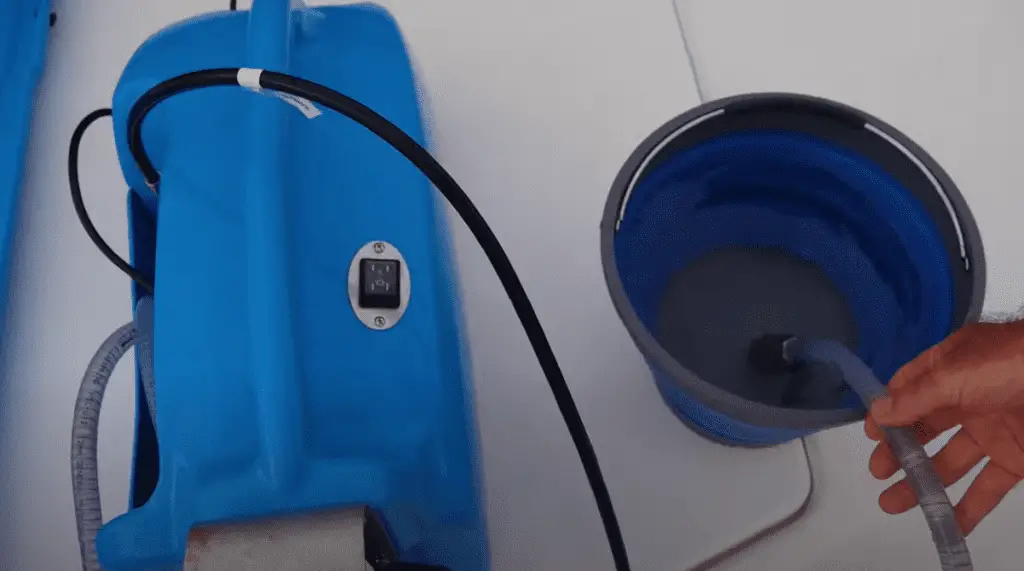
With a boat surrounded by water, there’s surely no such thing as dehydration out on the sea. Right? Well, not exactly. There’s way too much salt in seawater, and your kidneys would have to work overtime to filter it out. And to do that, they would need more water, which explains why copious amounts of seawater is toxic to humans.
So before you take a sip of that salty brine, why not pass it through a watermaker? The best watermakers for sailboats can take seawater and turn it into potable drinking water, giving you an infinite water supply to keep you hydrated and healthy on extended excursions.
What is a Watermaker?
Otherwise called a ‘desalinator’, a watermaker takes salty seawater and passes it through a process called reverse osmosis. This happens by pushing the water through a semi permeable membrane that allows the water molecules to pass through, but restricts salt, bacteria, and other organic material.
The clean, drinkable water is then passed into a water tank where you can then collect water for use. The remaining brine that was left during filtration is then tossed overboard and discarded. What’s nice is that these machines don’t use any chemicals, so there’s no risk of water contamination or pollution.
Some machines also use a pre or post treatment of the water using things like filters, sand, activated carbon, remineralization, or microfiltration to guarantee safe drinking water.
The Benefits of Watermakers

Modern-day technology has made it possible for manufacturers to develop more compact, efficient watermakers than ever before. This has also significantly driven down prices, making them far more accessible to sailors of all backgrounds.
Today, watermakers are recognized as a sailboat essential, especially for people who frequent the waves for long periods of time. Some of the benefits of these machines include:
Efficient Speed and Fuel Consumption
Yes, you read that right. Consider this - just 1 gallon of water weighs 8.3 pounds. If you’ve got 10 gallons on board, that’s equivalent to 83 pounds. A hundred gallons, and you’ve got an extra 830 pounds on board.
Watermakers allow boat owners to shave down their total weight. This lets you sail more efficiently, allowing faster speeds and lower fuel consumption which is important when you’re planning to sail long distances .
More Floor Area
Without a watermaker, you’d have to find room on board for the several tens or hundreds of gallons you need to bring with you. That also entails finding a place on your boat to store these water vats, which would obviously require significant room.
The watermakers of today are compact and lightweight. They can be either modular or self-contained, giving you different options to match your boat’s floor plan and use as little space as possible.
Safe Sailing
To ensure safe sailing, some studies have found that dehydration might actually be the reason for poor sailing performance. With dehydrated captains feeling lightheaded, achy, tired, and confused, it becomes increasingly likely to run into an accident that could endanger the lives of the people on board.
A watermaker guarantees that there will be fresh potable water at the ready any time you might need it. This doesn’t only curb the chances of dehydration, but also provides a solution for a variety of health conditions including diarrhea and various types of infections.
Extended Sailing Duration
You’ll only be able to sail for as long as your supplies on-board last. As your drinking water runs low, you’ll find yourself having to find the nearest dock to replenish supplies every so often. That’s if there are docks and shores you can access throughout your route. But what if there aren’t any?
Having the necessary equipment on board to extend your supply also means that you won’t have to rely on on-shore facilities to see you through your trip. This gives you more independence and flexibility as well as reducing the need to calculate complicated logistics.
Easier Boat Maintenance
Whether you’re underway or parked at the dock, your watermaker can help streamline boat maintenance by bringing freshwater straight to your vessel. With no need to collect buckets of water to lug back on board for a washdown, you can cut back the time and effort it usually takes to keep your boat clean.
Lots of boat owners even use their watermaker to give their boats a quick clean while they’re out at sea. This helps get rid of accumulated filth and dirt, reducing the need for a tedious deep clean once you get back to the dock.
The 3 Best Watermakers for Sailboats
Back in the day, watermakers were a luxury for the rich and the capable. But today, they’re incredibly affordable and easily accessible. Needless to say, manufacturers have also taken liberties with designing their own machines.
For you, that means an endless list of watermaker bets that could easily screw up your choice. So to help narrow down your options and lead you to the right one, here are our top 3 vetted picks:
1. Katadyn Power Survivor 40E Watermaker Desalinator

Small yet powerful, the Katadyn Power Survivor 40E is a reliable workhorse designed for boats with a small crew population of 2 to 3. This modular unit provides 1.5 gallons of water per hour, and draws only 4 amps from a 12-volt system, making it one of the most energy efficient desalinators out there.
This ‘Energy Recovery’ system works to desalinate seawater at just a fraction of the energy used by other watermakers in the same segment. Thus the device gets its name: Power Survivor.
Silent and lightweight, the machine lets you separate its primary system components so you can install the device seamlessly even in tight or awkward, irregular spaces. Most of its parts also come with a 3-year warranty, giving you that extra peace of mind versus damages and malfunctions.
2. AMPAC USA SeaPro Saltwater Desalination RO Watermaker

Able to produce 100 gallons per day, this watermaker was designed for use on small power boats or sailboats. Its super quiet automatic operation features intuitive controls that let you start and stop the desalination process with the push of a button.
Equipped with a noise pulsation dampener, the sounds produced during operation are negligible at best. This lets you run the machine in the evening to store up clean water for the next day without having to disturb your crew’s peace and quiet.
For boats with limited space, the SeaPro comes in a modular design that’s perfect for tight floor areas. It also comes in a partially mounted compact frame option that lets you fit the desalinator in place with little time and effort.
3. Rainman 12 Volt DC Watermaker
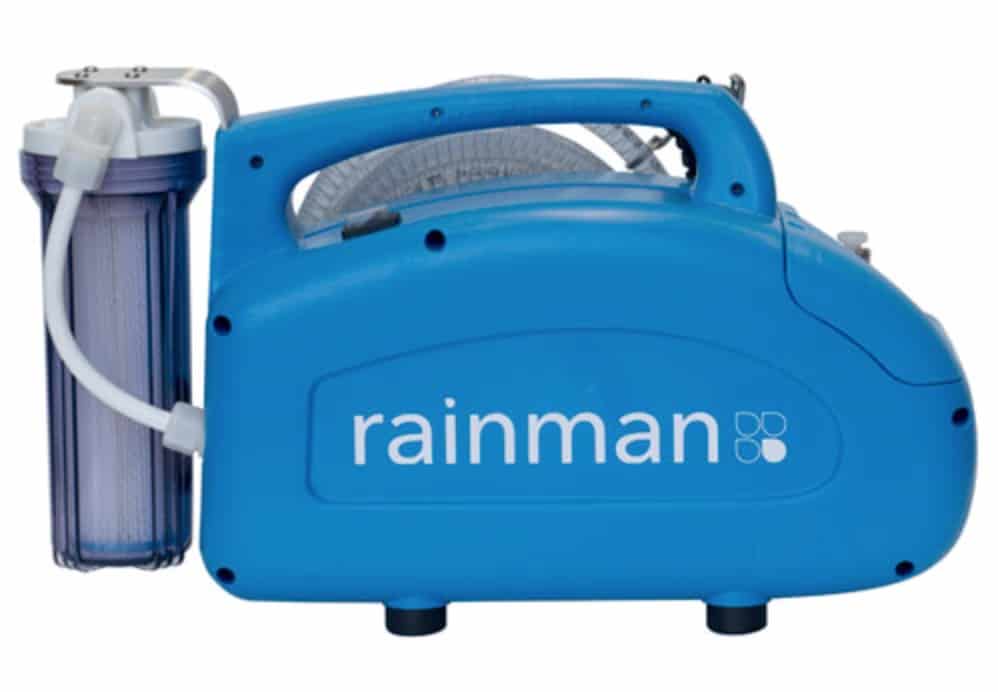
According to Rainman, their 12 Volt DC Watermaker consumes the least energy, able to filter 9 gallons of water per hour. The design touts a two-part system -- one pressure supply unit and another reverse osmosis unit. The former lifts the seawater from the source, while the other performs the desalination process.
What’s unique about Rainman’s watermaker is that the design gives you the option to install the unit directly to your boat, or to keep it handy as a portable watermaker system. This offers immense flexibility, allowing you to set up or take down your system as your situation calls for.
Aside from all of that, the Rainman Desalinator also features a streamlined control panel that makes everything easy to understand and operate at a glance. It also comes equipped with its own LED salinity sensor that tells you when water is good enough to store in your tank.
Choosing the Right Desalinator Watermaker
Not quite sure which one is right for you? Here are a few factors worth taking into consideration when buying a watermaker.
Size and Installation
There are two major options: modular and self-contained. The modular system lets you take the unit apart to install each part at a different part of your boat. This one’s ideal for boats with limited space. The self-contained system has the entire unit built together, which means it has to be installed as one piece.
Gallons Per Hour
How big is your crew? More people means you might need a watermaker with a higher GPH. Smaller machines capable of 1.5 to 2 GPH might be good for crews of 2-3 persons. But larger boats may need several hundreds of GPH to meet all of the crew’s needs.
* See: What size Yacht will Require a Crew?
Non-Proprietary Parts
You’re going to make part replacements one way or another. See to it that you’re buying a machine that uses non-proprietary parts so you can purchase the necessary replacements anywhere online.
Warranty and Services
In case anything happens to your watermaker, who will be there to help you fix it? Check the warranty coverage and see how long the manufacturer is willing to cover it for damages and malfunction. It’s also important to make sure there’s a nearby service center to cater to your needs in case of damage.
Water You Waiting For?
The best watermakers for sailboats offer to give you a virtually endless supply of clean drinking water when you need it. But there are a ton of choices on the market, so it pays to know what you’re getting before you shell out that cash. Consider our bets for the best desalinators for your sailboat, and keep your crew happy, healthy, and hydrated all along the way.
Related Posts
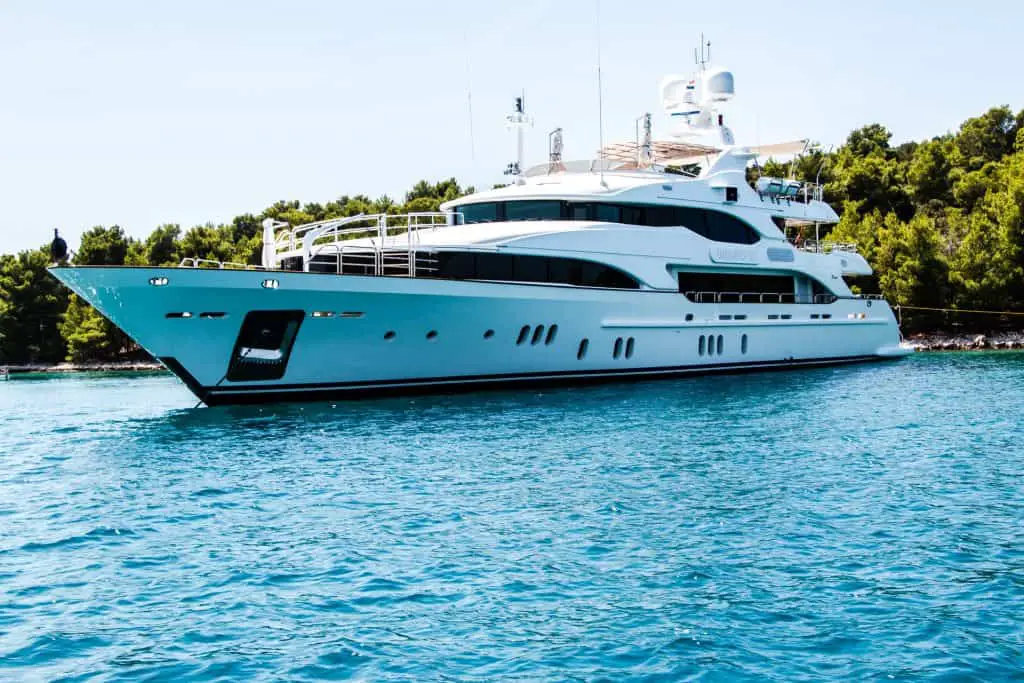
Yacht Broker Salary: How Much Does a Yacht Broker Make?
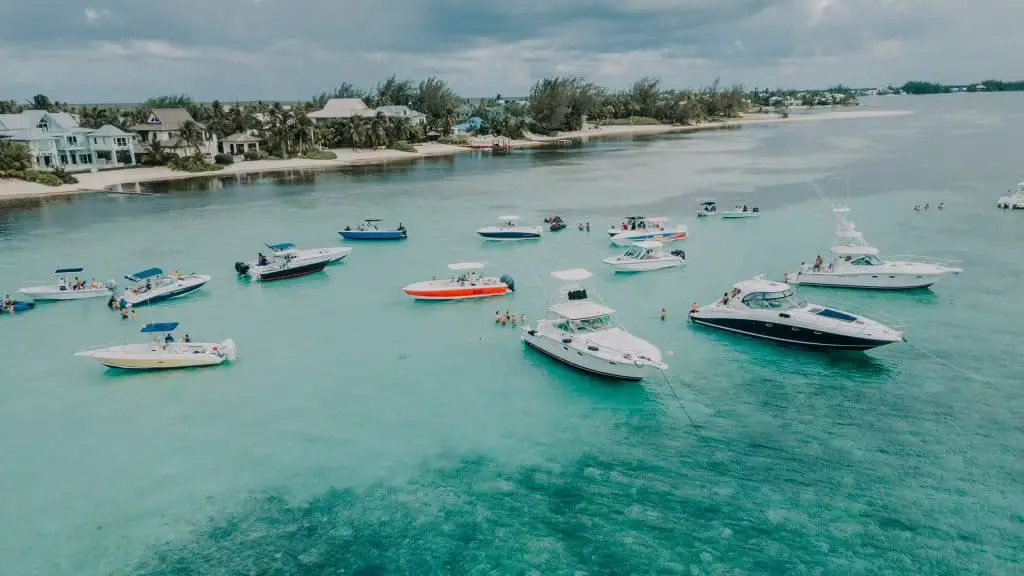
What to Wear to a Yacht Party: Business or Leisure
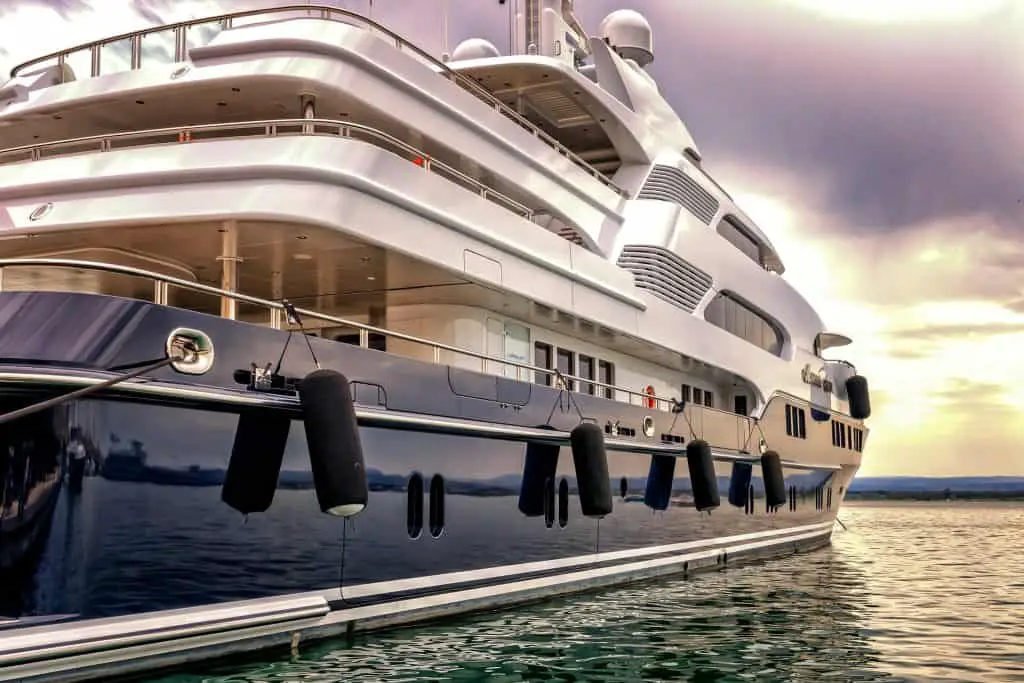
What Size Yacht Requires a Crew and a Captain?
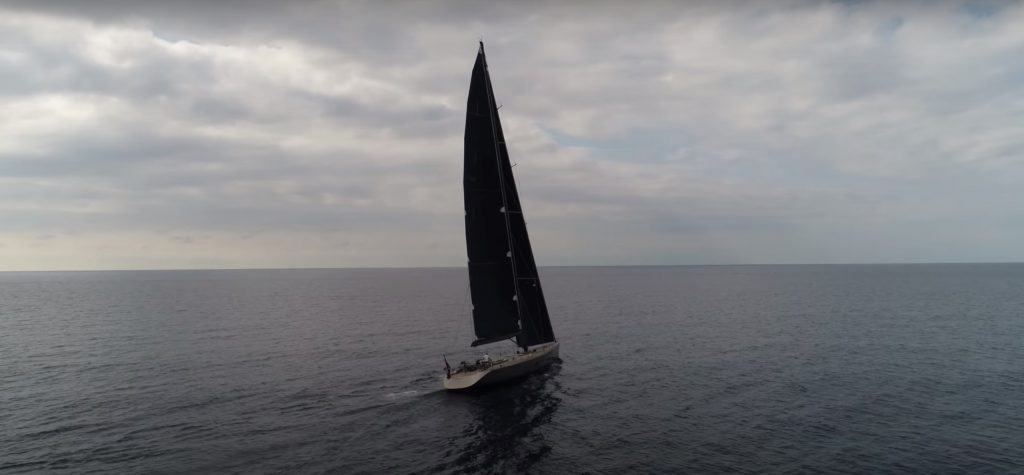
Why Do Yachts Have Black Sails? [The Reason Explained]


Home » Blog » Gear » Watermakers: a guide to marine desalinators and making water on a boat
Watermakers: a guide to marine desalinators and making water on a boat
By Author Fiona McGlynn
Posted on Last updated: March 23, 2022
There’s something magical about a watermaker—at least that’s how I felt after we installed one on our boat. That may sound overblown, but think about it: watermakers transform salt water into fresh water, providing a near-endless supply of potable water for drinking, bathing, and cleaning! THAT my friends is an amazing piece of technology!
(If you don’t share my enthusiasm, try going without a shower for a few days and you’ll begin to see my point).
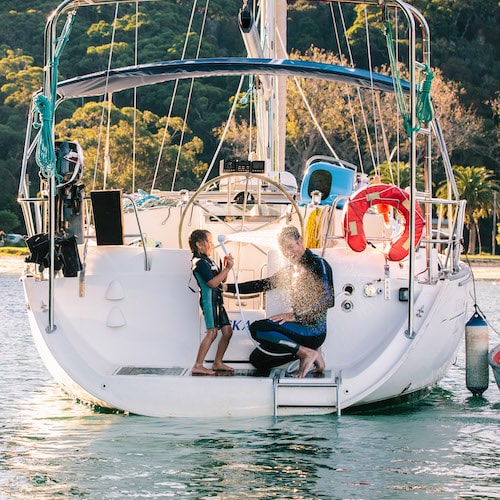
Having experienced living on a boat and cruising, both with and without a marine desalinator, I can attest that it’s a game-changing piece of gear. However, you definitely don’t need one to go cruising. There are plenty of low-tech ways to collect and make water on a boat.
Marine desalinators do offer some major benefits: there’s more water for showers, it’s easier to travel farther afield, you can spend more time in a remote location. However, these benefits have to be weighed against the drawbacks: namely a hefty price tag and ongoing maintenance.
Deciding whether a watermaker is right for you will come down to the type of cruising you’re doing, how much water you need, and your budget. Read on to learn about the pros and cons, costs, and key features of marine watermakers.
Table of contents
- 1 How does a watermaker work?
- 2.1 Benefits
- 2.2 Drawbacks
- 3.1 Powered or handpump
- 3.2 Electric or engine drive
- 3.3 Energy recovery watermaker
- 3.4 Modular, self-contained, and portable watermakers
- 3.5 Automatic flushing systems
- 3.6 Automatic Pressure Regulation and adjustable pump speed
- 3.7 Remote control panels
- 4 Top watermaker brands
How does a watermaker work?
A watermaker on a yacht converts seawater into fresh water through a process known as reverse osmosis (RO). A high-pressure pump pushes seawater through a semi-permeable membrane that filters out salt, organics, and bacteria. The fresh water is pumped into your water tanks while the remaining brine bi-product is discharged over the side of the boat, back into the ocean.
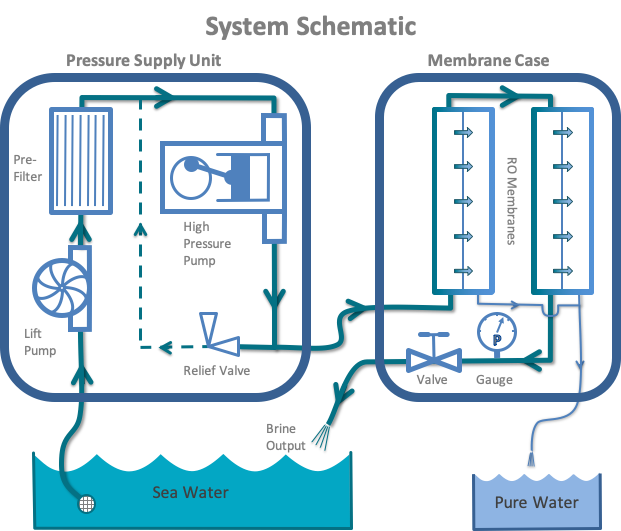
Marine watermakers: the benefits and drawbacks
Less water rationing.
When we started our 13,000 mile trip across the Pacific, we didn’t have a watermaker. We were on a tight budget and decided to prioritize other pieces of equipment like a life raft and wind vane.
As a result, we became experts in conserving water on a boat . We would carefully ration out water for washing dishes, taking showers, and even brushing our teeth!
After getting a watermaker we became far less meiserly because we knew we could always make more water if we needed to. It was a relief to not be constantly thinking about how much water we were using over the course of a day.
That being said, we couldn’t relax completely. We had to keep our tanks topped up, so as not to run the pump dry. We also always carried potable water in reserve, in case our watermaker broke in the middle of a long passage.
More luxuries
Can’t live without a proper shower? A boat water maker can make water-intensive luxuries like freshwater deck washdown, freshwater flushing heads, laundry, daily showers, and even baths, a possibility.
As great as this sounds in theory, we were surprised to find that we didn’t indulge in more showers after we got the watermaker.
We continued to use a hand pump pesticide sprayer to shower on deck despite having a watermaker and shower below. While some of this came down to habit, we also disliked running our engine (and consuming diesel) just to run the watermaker.
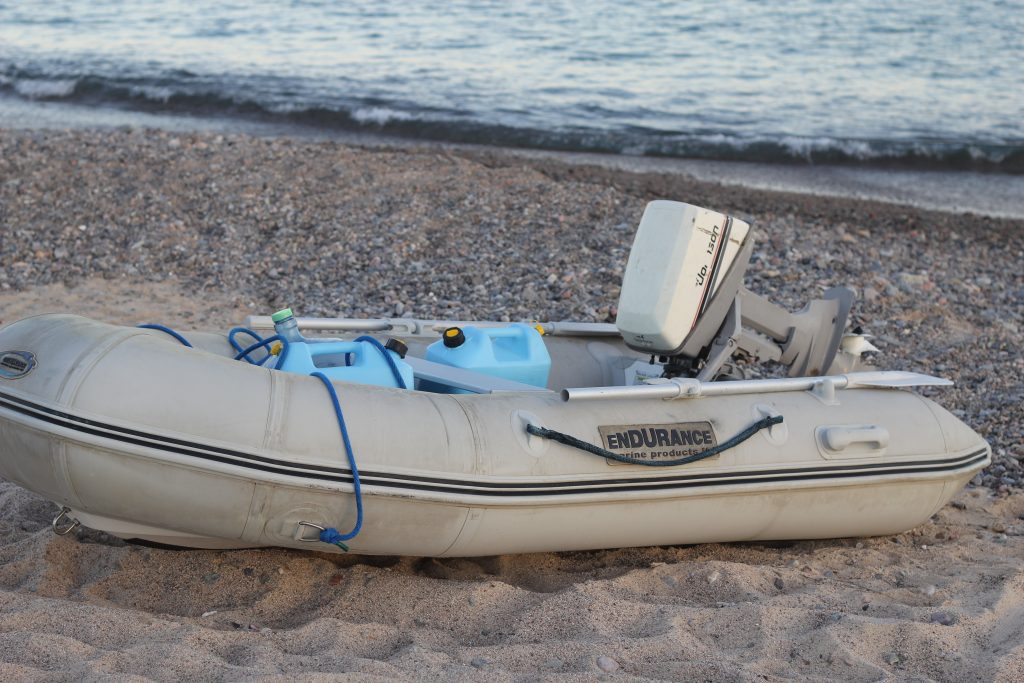
No hauling water
For us, this was by far the greatest benefit of having a watermaker!
While cruising in the US and Canada, we could refill our water tanks at a dock or marina. This was a minor hassle because it involved pulling up the anchor and docking the boat.
In Mexico, it was more challenging to get water. We would fill 5-gallon jugs at the local water purification plant in town and wheel them back to our boat on a collapsible dolly.
It often took a couple of trips with the dolly and dinghy to fill our water tanks. Oh, and we broke our dolly, twice!
We realized that if we wanted to spend more time exploring, and less time hauling water, we would have to invest in a watermaker. When we reached La Paz, Mexico we bought a refurbished watermaker, and we were so glad we did!
Our sailboat water maker gave us the gift of time, especially in places like Mexico and the South Pacific, where there were limited opportunities to fill water tanks up at the docks. It also saved us paying docking and water fees.
We estimate that our boat water maker saved us anywhere from four to six hours every week, time that we could spend exploring the wonderful places we were visiting.
A clean, safe water source
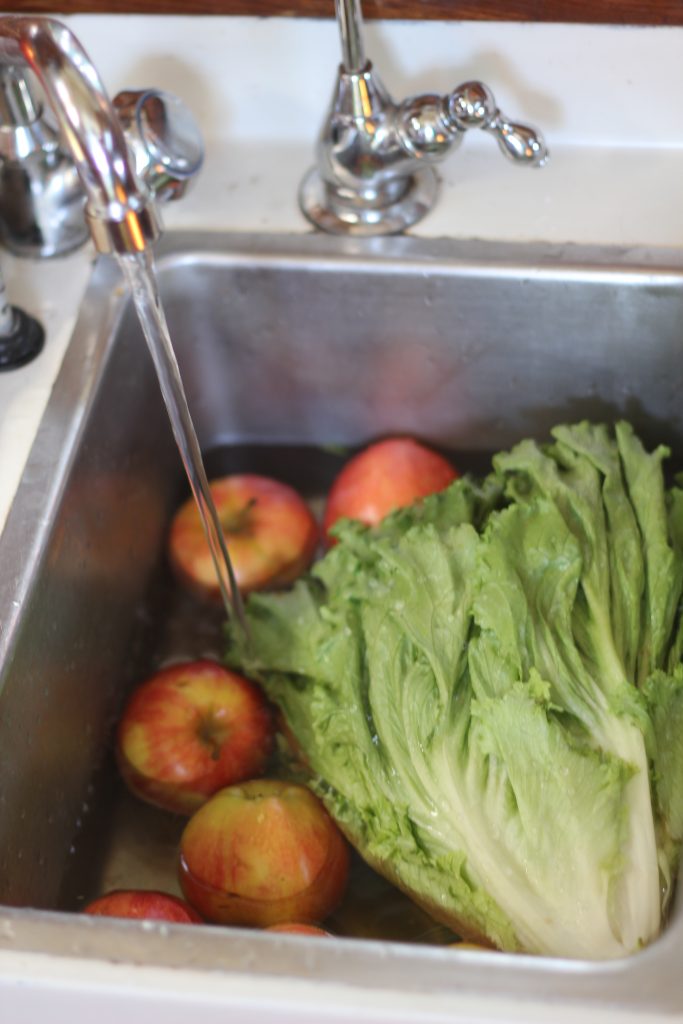
In places where the drinking water may be suspect, a boat water maker can be a reliable source of safe drinking water (assuming it’s in good working condition!).
More time in remote locations
A watermaker is a great tool if you’re drawn to remote locations where you might be the only boat in the anchorage.
It wasn’t until we reached Los Frailes, a secluded village on the Baja, that we really began to think about buying a watermaker.
There we were in an idyllic anchorage, surrounded by spectacular hiking and fishing. There was only one problem—every two days we had to walk 10 miles into town with our water jugs and hope that some kind samaritan would give us a lift back to our boat.
Before having a watermaker, we’d often leave a place we loved just because we needed to fill up our tanks. With a watermaker, we were more self-sufficient and could stay an extra few days, or as long as we wanted!
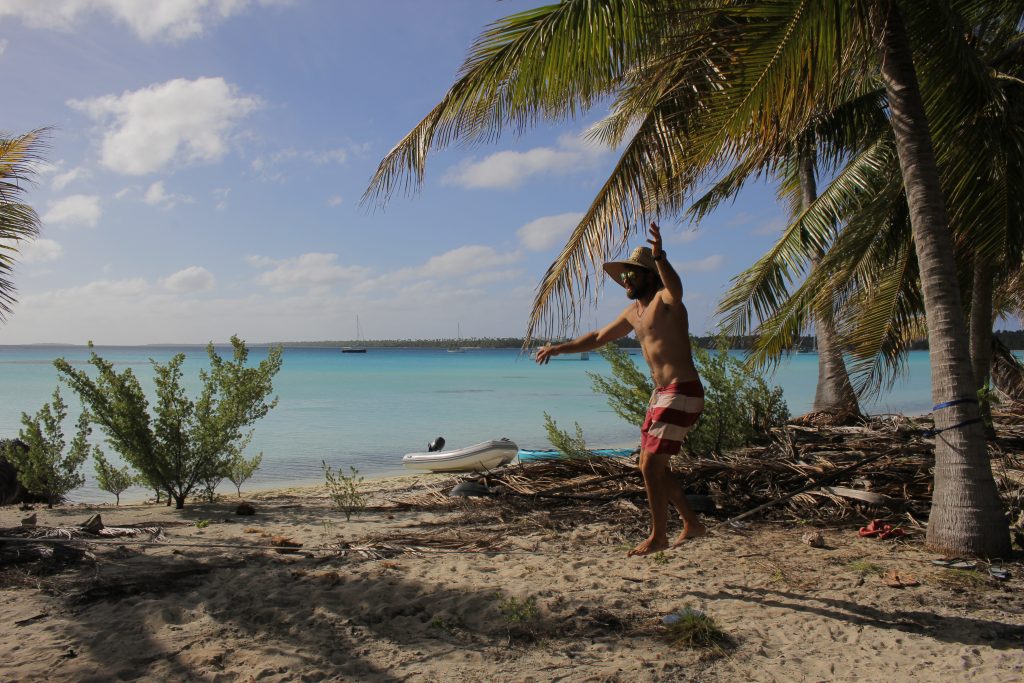
The number one drawback is the cost. We were able to find a refurbished water desalinator for $3,000, which was a great deal but also a considerable slice out of our cruising kitty.
How much does a watermaker cost?
Powered desalination systems for your average recreational cruising boat range from around 3,500 USD to 11,000 USD, with the more expensive options offering higher production (gallons of fresh water per hour).
Ongoing maintenance
Watermakers are yet another piece of boat equipment that needs to be maintained.
The majority of watermaker problems are caused by not using it enough or not using it properly.
If a watermaker is not used for a few weeks, the planktonic organisms in the seawater will die, rot, and clog the membrane and filters. This can eventually damage the reverse osmosis membrane in the watermaker.
For this reason, boat water makers should be used frequently and regularly flushed with fresh water.
Watermaker flushing
Check your manufacturer’s instructions on how to flush.
Rainman recommends flushing the seawater out of the system with fresh water if you are not using the system for more than a day or two. After another week, you need to freshwater flush the system again or pickle it for long-term storage.
Of course, it’s easy to forget, so we made it a rule to freshwater flush our watermaker after every use.
This is one good reason to choose a watermaker with an output that will meet your water consumption needs but not exceed them. If you’re using it every second day, you won’t have to try and remember whether you’ve flushed it or not.
Flushing a watermaker is relatively simple but it does involve a bit of work. We used a system with buckets of fresh water to flush our system and it generally took about 5 minutes.
You can also buy systems that automatically flush your watermaker at pre-determined times—even when you’re away from the boat (more on autoflush systems below).
Whatever you do, don’t use chlorinated water to flush as it will destroy reverse osmosis membranes. It’s possible to buy a carbon filter to remove chlorine from water sources at the dock.
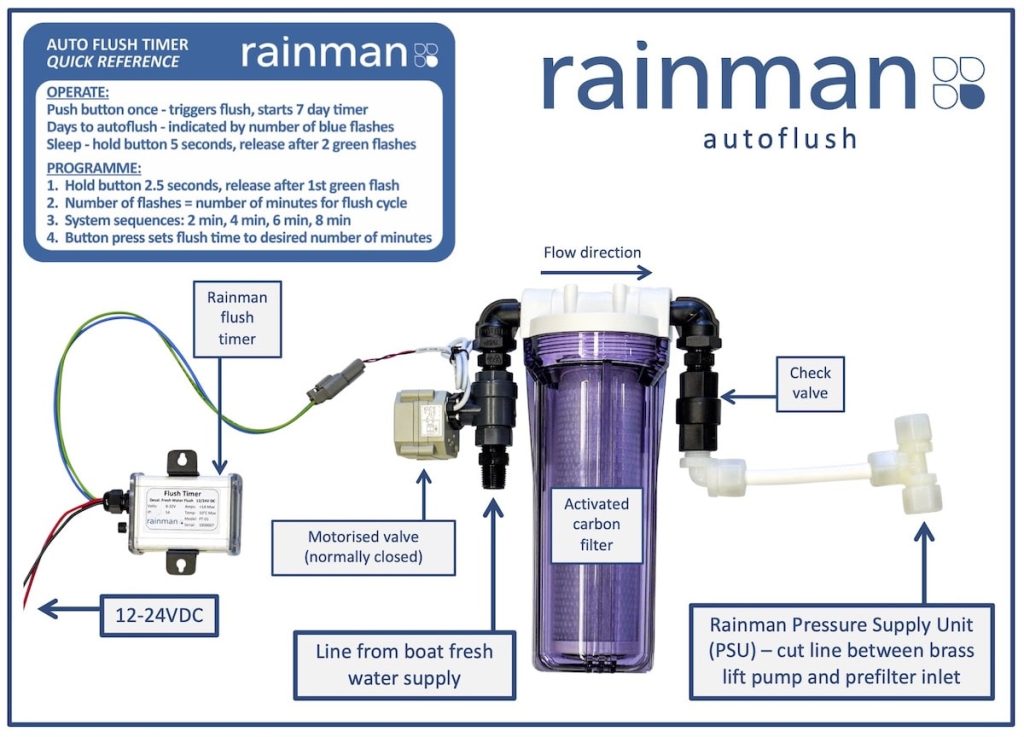
Pickling a watermaker
If you don’t plan on using your watermaker for a while it needs to be “pickled” with a special biocide to prevent growth and buildup which could render your reverse osmosis membrane totally useless.
A watermaker should also be pickled every so often to chemically cleanse the membrane.
In addition to flushing and pickling, you will also need to clean out and replace the raw water pre-filters.
Operating costs
When properly cared for, a membrane should last five to ten years. If you don’t properly flush or pickle your watermaker, it can be a lot sooner and membranes aren’t cheap, generally costing in the range of 200-700 USD.
You’ll also need to purchase pre-filters and pickling solution, which are generally quite affordable. It’s also a good idea to carry spare parts
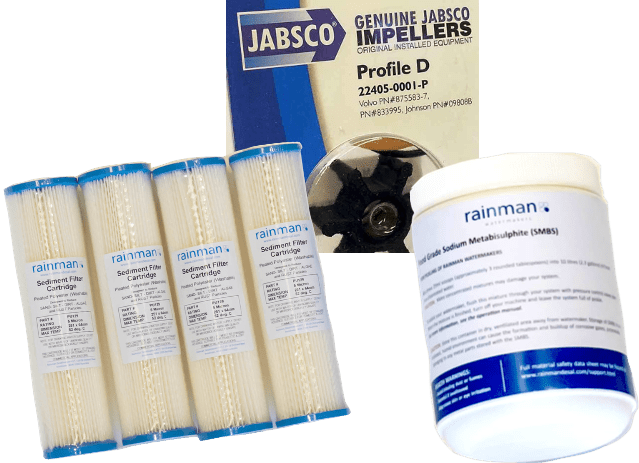
Power consumption
Watermakers can be real power hogs. When Practical Sailor tested a dozen DC watermakers they found they could draw anywhere from 12 to 48 watts per gallon, a huge range in efficiency!
According to Practical Sailor, “for maximum efficiency none of the systems drawing 15 amps or more should be operated without running the engine at the same time.”
We had to run our engine for hours to fill our tanks, which was annoying (and loud) when we were hanging out at anchor and also used up another finite resource—diesel fuel.
In our view, this was the single largest drawback to having a watermaker aboard.
Keep in mind that your power supply will determine what type of watermaker you buy. You may need to upgrade your electrical panels, get a generator or high-powered alternator, add solar panels, or increase battery capacity to supply the demand.
You can’t make water everywhere
While watermakers offer great flexibility and freedom, you can’t just make water in any old spot. If you make water in a polluted marina or anchorage, you’ll risk clogging up your filter. Most cruisers will head out to open water to ensure the saltwater they’re using is as clean as possible.
Key features to look for
Powered or handpump, handpump watermakers.
Handpump watermakers tend to be small and portable, the perfect thing to keep in your ditch bag in the event of an emergency. They’re less expensive than powered watermakers and produce far less water, usually around one gallon per hour.
Though I do know cruisers who have used a handpump watermaker for everyday use, they typically tend to be kept aboard for survival situations.
Powered watermakers
Powered watermakers run off your electrical supply or engine and can produce tens of gallons of water per hour. They tend to be a lot more expensive, but they’re productive enough to replenish your tanks.
Electric or engine drive
Powered watermakers can be electrically driven, by AC or DC, or run off the boat engine.
AC watermakers
AC models can produce in the range of 20-60 gph and are ideal for cruisers with an AC generator or alternator on board. They can also be used on boats with ample solar or wind sources and an inverter.
DC watermakers
DC watermaker systems typically produce in the range of 10-30 gph and are ideal for boats with solar power or 12V battery power.
Engine-driven watermakers
On an engine-driven watermaker, the high-pressure pump is belt-driven. These can produce a considerable amount of water, even on small engines. For instance, engine-driven units produce between 20-60gph, twice what a DC unit can produce.
Energy recovery watermaker
DC watermakers have become more efficient in recent years thanks to energy recovery systems (ERS). When the water leaves the watermaker it is still under pressure. ERS uses a set of valves to make use of this excess pressure to help drive the pump, which can reduce energy consumption by as much as 80 percent.
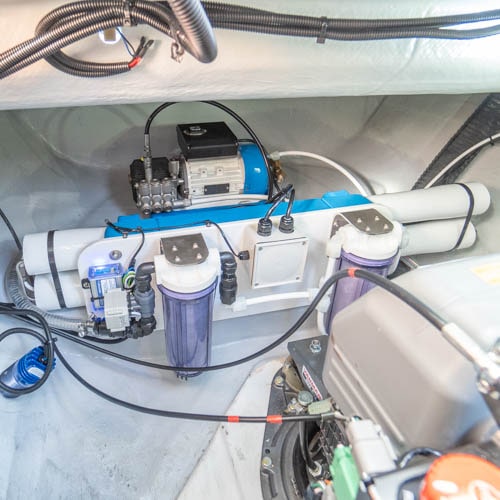
Modular, self-contained, and portable watermakers
Watermakers can be bought as modular, self-contained, and portable units. Choosing the right one may depend on your boat size and layout and whether you’re comfortable installing the watermaker yourself.
Modular units
Modular units come as several separate components that you can mount and connect yourself. This obviously offers a lot more flexibility and is particularly useful on smaller vessels where you may not have a lot of space. The downside is that these systems will take longer to install.
Self-contained units
Self-contained units arrive pre-assembled. While easier to install, they’re often bulkier and best suited to a bigger cruising sailboat with a large engine room.
Portable watermakers
Portable watermaker systems, like the Rainman watermakers, are entirely self-contained. Their compact design makes them easy to move and stow and you can completely avoid a permanent installation.
Simply put the intake and brine discharge hoses overboard, the freshwater hose in your water tank and you’ll be making water in no time.
If you race, have multiple boats, or plan on selling your boat, a portable watermaker is a great option because it can be easily moved from boat to boat.
If we were to buy another watermaker, we would probably opt for a portable one.
Automatic flushing systems
Automatic flushing systems use your boat’s freshwater supply to flush the watermaker for several minutes every few days. These systems require additional components (e.g., a timer, carbon filters, and a motorized valve) and installation but they take a lot of the maintenance out of having a watermaker onboard.
Automatic Pressure Regulation and adjustable pump speed
Your watermaker’s efficiency will be affected by the temperature and salinity of the water you’re cruising in. Cold and highly saline waters (e.g., in the high latitudes) will be more work for your watermaker, so it will take longer to purify.
Some units feature Automatic Pressure Regulation (APR) and adjustable pump speed which can help compensate for fluctuations in water temperature and salinity.
Remote control panels
Some watermakers have the option of a control panel which allows for easier access and remote control. Control panels tend to have a fairly simple interface with just a few gauges but may include a salinity sensor—so you can keep tabs on water quality—and auto-flush integration—so you can flush your watermaker with the flip of a switch.
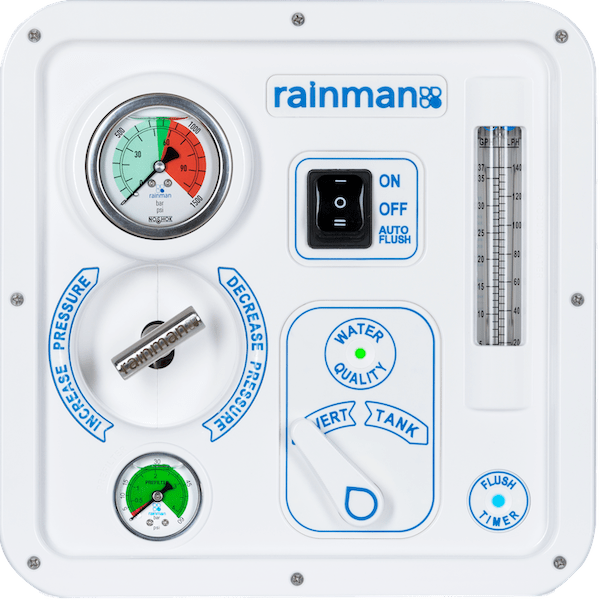
Top watermaker brands
If you’re considering buying a watermaker for a boat, here are some of the top brands to consider.
- Cruise RO Watermaker
- Echotec watermakers
- Horizon Reverse Osmosis (HRO)
- Sea Recovery watermakers
- Schenker watermakers
- Spectra watermakers
Fiona McGlynn is an award-winning boating writer who created Waterborne as a place to learn about living aboard and traveling the world by sailboat. She has written for boating magazines including BoatUS, SAIL, Cruising World, and Good Old Boat. She’s also a contributing editor at Good Old Boat and BoatUS Magazine. In 2017, Fiona and her husband completed a 3-year, 13,000-mile voyage from Vancouver to Mexico to Australia on their 35-foot sailboat.
Terms and Conditions - Privacy Policy
- BOAT OF THE YEAR
- Newsletters
- Sailboat Reviews
- Boating Safety
- Sailing Totem
- Charter Resources
- Destinations
- Galley Recipes
- Living Aboard
- Sails and Rigging
- Maintenance

Do You Need a Watermaker for Your Sailboat?
- By Jen Brett
- Updated: October 2, 2019
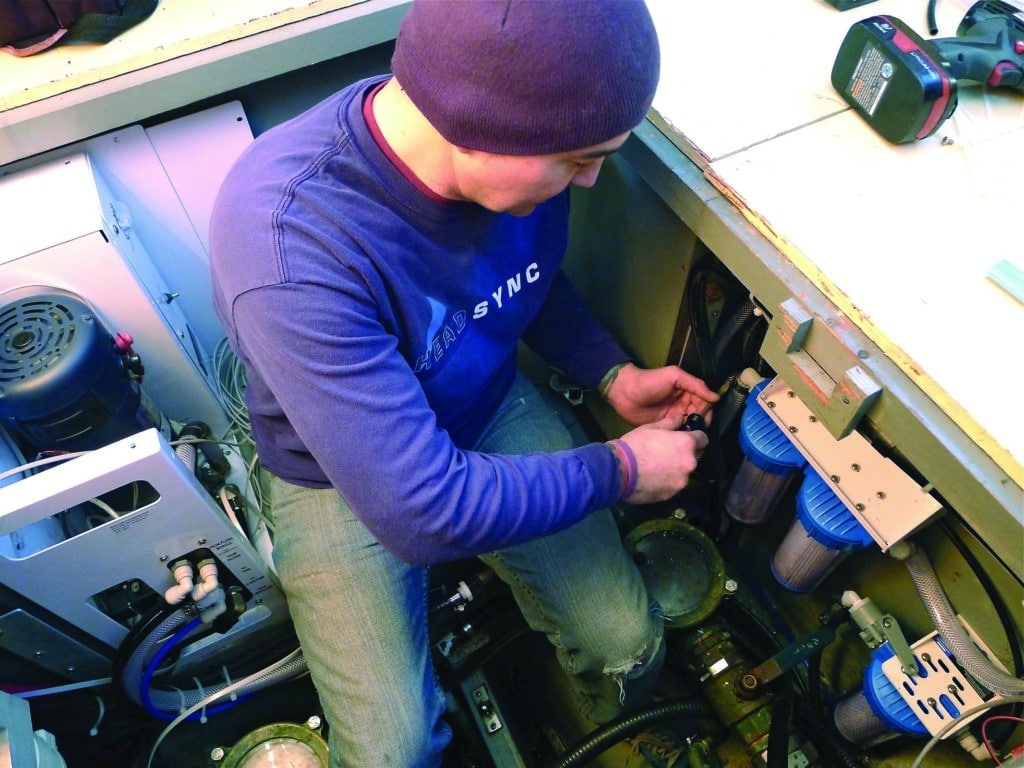
I remember, in the not too distant past, when having a watermaker aboard a cruising boat seemed to be the ultimate luxury. Plenty of sailors considered them too expensive and complicated. Fortunately times have changed. With improved technology and a range of price points on the market, now even average cruising boats of modest means carry a reverse-osmosis system. And really, is there anything that feels better after a day spent sailing and swimming than a hot shower? The freedom and security that come with full water tanks are also a nice bonus, particularly if you’re cruising in an area where fresh water is difficult to come by and pricey when you do.
Choosing a Watermaker
As with any major system, there are many factors to consider when you choose a watermaker. You’ll need to figure out your freshwater needs, the space you have available for the system and how you’re going to power it . Generally speaking, in a reverse-osmosis desalination system the raw water is run through a series of pre-filters, and then a high-pressure pump moves the water through one or more membrane housings. The wastewater, or brine, is released overboard and the product water goes into your water tanks.
Since all of the watermakers that are currently available for cruising sailboats use this process for desalination, the major differences between the systems are how you power the high-pressure pump and the user interface. Powering options include 120/220-volt AC, 12- or 24-volt DC and engine/belt driven. All have their pros and cons.
“The first question I ask a potential customer is ‘Will your boat have a ship’s generator?’” said Rich Boren of Cruise RO Water. “If they plan to have a generator, then the decision to go with a 120-volt high-output watermaker seems natural. While running the generator for battery charging and other loads two to three times per week, they can keep their water tanks full without having to make generator runs just to make water.”
A 12-volt system, such as the Spectra Catalina 300 Mk II or the Horizon Reverse Osmosis Seafari Quest, makes a lot of sense for smaller cruising boats since they don’t need a generator to run and have fairly miserly power consumption. On a breezy, sunny day, a solar panel and/or a wind generator will likely keep up with the demand. “The only difference between 12-volt DC low-output and 120-volt AC high-output watermakers is how the high-pressure pump brings seawater up to the 800 psi needed to drive fresh water through the reverse-osmosis membrane,” Boren said. “The membrane and support equipment, like pre-filtering and plumbing, are the same.”
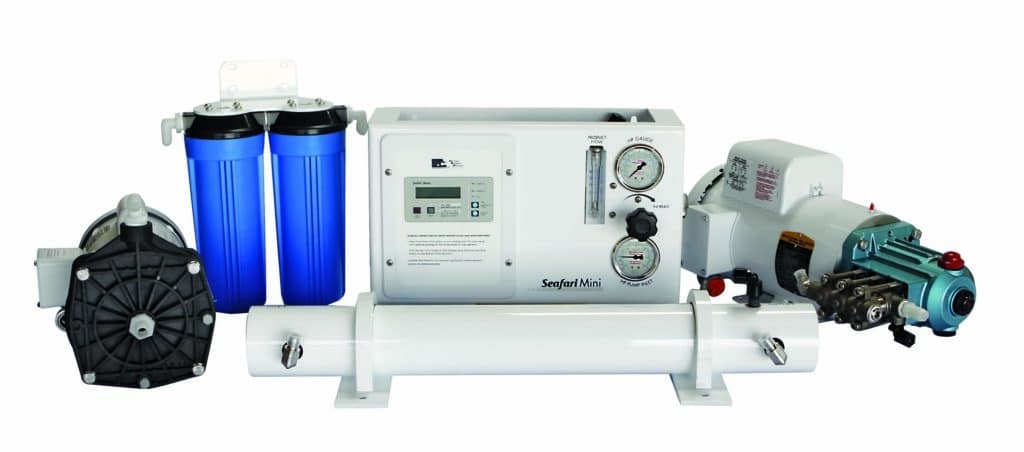
These systems typically produce anywhere from about 6 to 16 gallons per hour, and some units can do so for about a 1-amp-per-gallon power draw.
“Many smaller sailboats, under 45 feet or so, often utilize solar panels,” said Berkeley Andrews of Parker Hannifin, which produces Sea Recovery, Horizon Reverse Osmosis and Village Marine watermaker systems. “Their entire electrical backbone consists of 12-volt or 24-volt. So they must have a watermaker that can operate on low voltage. These customers have limited amp hours on their batteries, so all of their equipment must be suited to handling this.”
In choosing a watermaker, Bill Edinger, owner of Spectra Watermakers, said to be realistic about water needs. “When helping customers decide which system is right for them, first we like to determine their approximate water usage with questions like ‘How many people are aboard normally? Are you going to be living on the boat full time? Do you have a washing machine? Any children? Are you going to be cruising full time or leaving the boat for extended periods?”
A common error people make is choosing a watermaker that is too small for their needs. “The most common mistake I see cruisers making in their watermaker purchase decision is underestimating how much water it will take them to cruise comfortably,” Boren says. “I’m not talking about the minimal amount of water it takes for the crew to stay alive, because there is a big difference between staying alive and comfort. Selecting a watermaker that will only meet their minimal drinking-water needs but not keep up with the comfort needs of the crew can lead to crew tensions and feeling like camping rather than cruising.”
Remember that “watermakers are rated in gallons of production in a 24-hour period,” Edinger said. “So a 300-gallon-per-day watermaker system sounds like a lot of water. The important thing is that it produces about 12 gallons per hour. Normally a system like this will be run three to four hours per day if power is not a critical issue, in this case producing 36 to 48 gallons of water. It’s better for a system to run for a few hours every few days than an hour every day.”
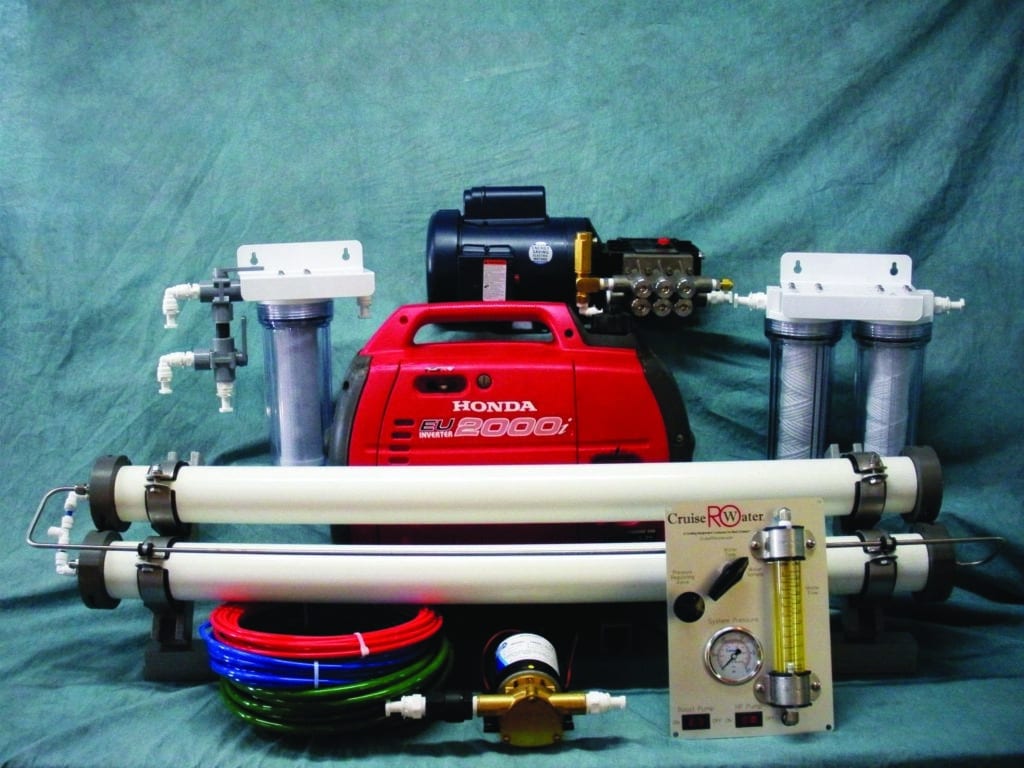
Watermakers for Small Boats
If space is at a premium, consider purchasing a modular system instead of an enclosed one. In a modular system, the components, such as the membranes and filters, can be mounted separately. Another power source for the high-pressure pump is the boat’s diesel engine. In these engine-driven setups , the pump and an additional pulley are mounted on a custom bracket next to the engine. The watermaker can then be run while motoring or using the engine to charge the batteries.
While engine-driven watermakers can produce a large amount of water, 20 or more gallons an hour on average, the downside is that the installation can be more complex than for other systems. “Unlike the 12-volt DC or 120-volt AC watermakers, where you simply bolt the high-pressure pump down and then run the wires and plumbing hoses, the hardest installation aspect of an engine-driven watermaker is finding space. Some boats simply have no room in the engine compartment to mount the 5-pound pump with a 7-inch pulley on the engine while still leaving access to other engine parts that need to remain serviceable,” Boren says.
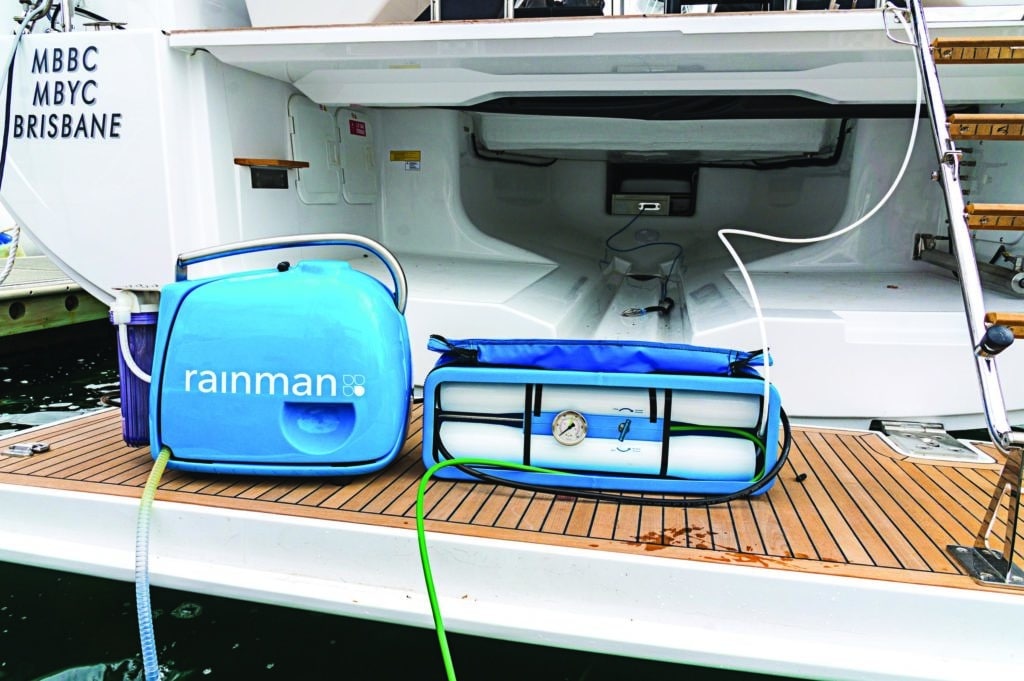
A relative newcomer to the marine market, the portable watermaker is a good solution for cruisers who want the convenience of a watermaker but don’t want to permanently install one. The Rainman is one such system that is available as a self-contained unit driven by a gasoline-powered Honda motor, or as a 115-volt AC-powered unit. “The bulk of our gasoline-powered system customers are sailing yachts between 30 and 50 feet,” said Ron Schroeder of Rainman Desalination. “Our customers seem to prefer to have a simple and somewhat manual system over one that relies on control panels, software and solenoid valves. We are also attractive to those customers who have had bad experiences with the installation process of an installed system.”
The Spectra Passport is another portable system. Edinger said it has already proved popular with offshore race crews and cruisers who need a watermaker for only a limited time.
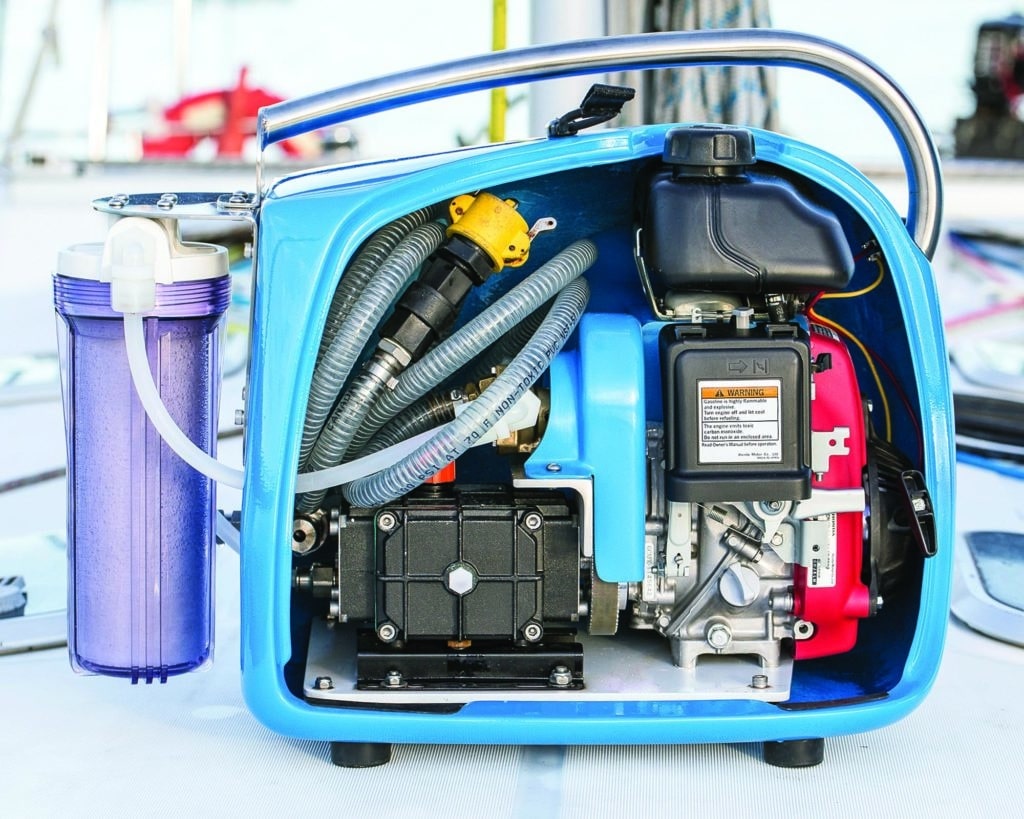
Maintenance for Watermakers
Watermakers have long had a reputation for being difficult to maintain, but the equipment has improved over the years and overall, routine maintenance isn’t more challenging than with other onboard systems. “The best rule of thumb is to operate the watermaker in water that looks good,” Andrews said. “There are a few factors in the feed-water condition that come into play. Operating a watermaker in dirty harbors will most certainly result in repeated pre-filter changes and a clogged sea strainer. If you have extra filters on board, you can get by, but it’s not recommended. The environment in the open ocean and remote anchorages is much better. Also consider how shallow the water is where you’re anchored. Sometimes there can be a lot of tidal movement, which can kick up fine particulate and sediment. This too can also contribute to more frequent filter changes and even damage other components. A nice option is an automatic freshwater flush, which will rinse the watermaker’s membrane element after use. It helps keep the membrane vessel housing free of any biological growth that could foul the membrane and reduce your ability to produce fresh water.”
Whatever system you choose, with proper use and maintenance you can expect years of service from your watermaker. And plenty of hot showers.
Jen Brett is a CW associate editor. This article first appeared in the February 2015 issue of Cruising World.
Aqua Marine: www.aquamarineinc.net
Blue Water Desalination: www.bluewaterdesalination.com
Cruise RO: www.cruiserowaterandpower.com
Dometic Marine Sea Xchange: www.dometic.com
ECHOTec: www.echotecwatermakers.com
FCI Watermakers: www.filtrationconcepts.com
Horizon Reverse Osmosis (HRO): www.hrosystems.com
Katadyn: www.katadyn.com
Rainman: www.rainmandesal.com
Sea Recovery: www.searecovery.com
Schenker Watermakers: www.schenkerwatermakers.com
SK Watermakers: www.skwatermakers.net
Spectra Watermakers: www.spectrawatermakers.com
Village Marine Tec: www.villagemarine.com
Watermakers Inc.: www.watermakers.com
- More: DIY Sailboat Projects , How To , systems
- More How To

Cruising with a Pet

Fatty Goodlander: Have Little, Want Less

How to Ride a Wave

How To Prioritize Your Sailboat’s Spring Checklist
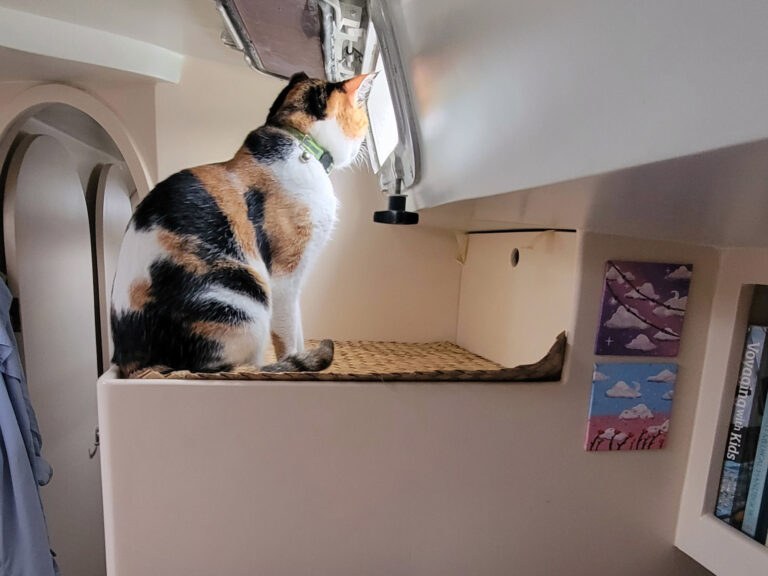
Modern Multihulls: The Future’s Electric

Portable Watermakers
+1-954-900-8800
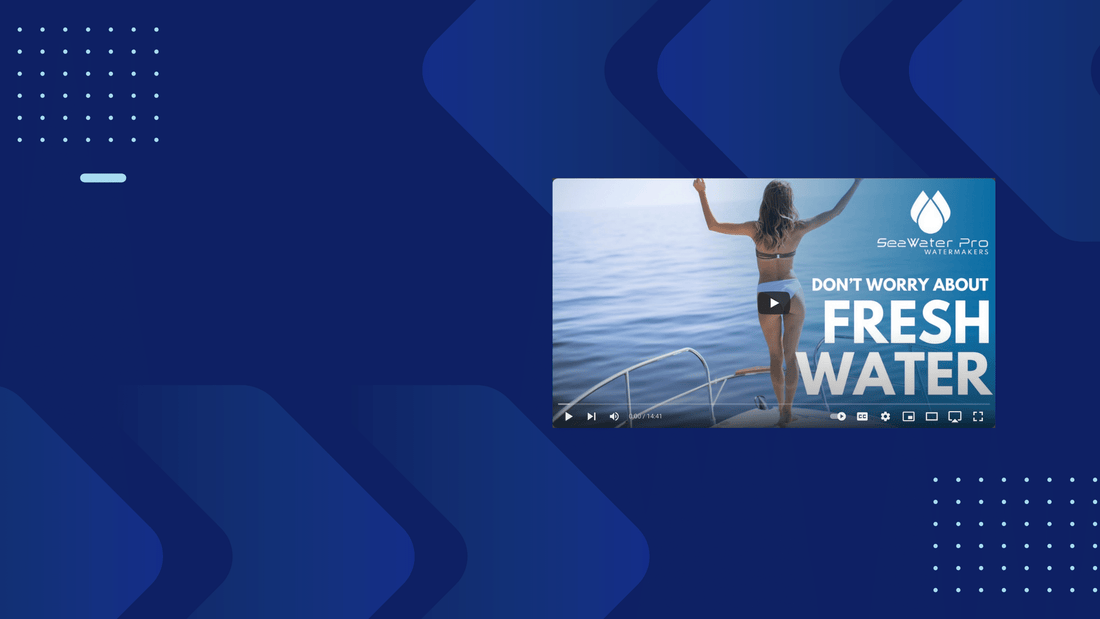
Welcome to SeaWater Pro
Enjoy the purest water without limitations - easy and reliable. Purchase your modular, portable, or compact boat salt water desalinator today!
Fast Express Shipping.
Industry Best Warranty!
Have a question?
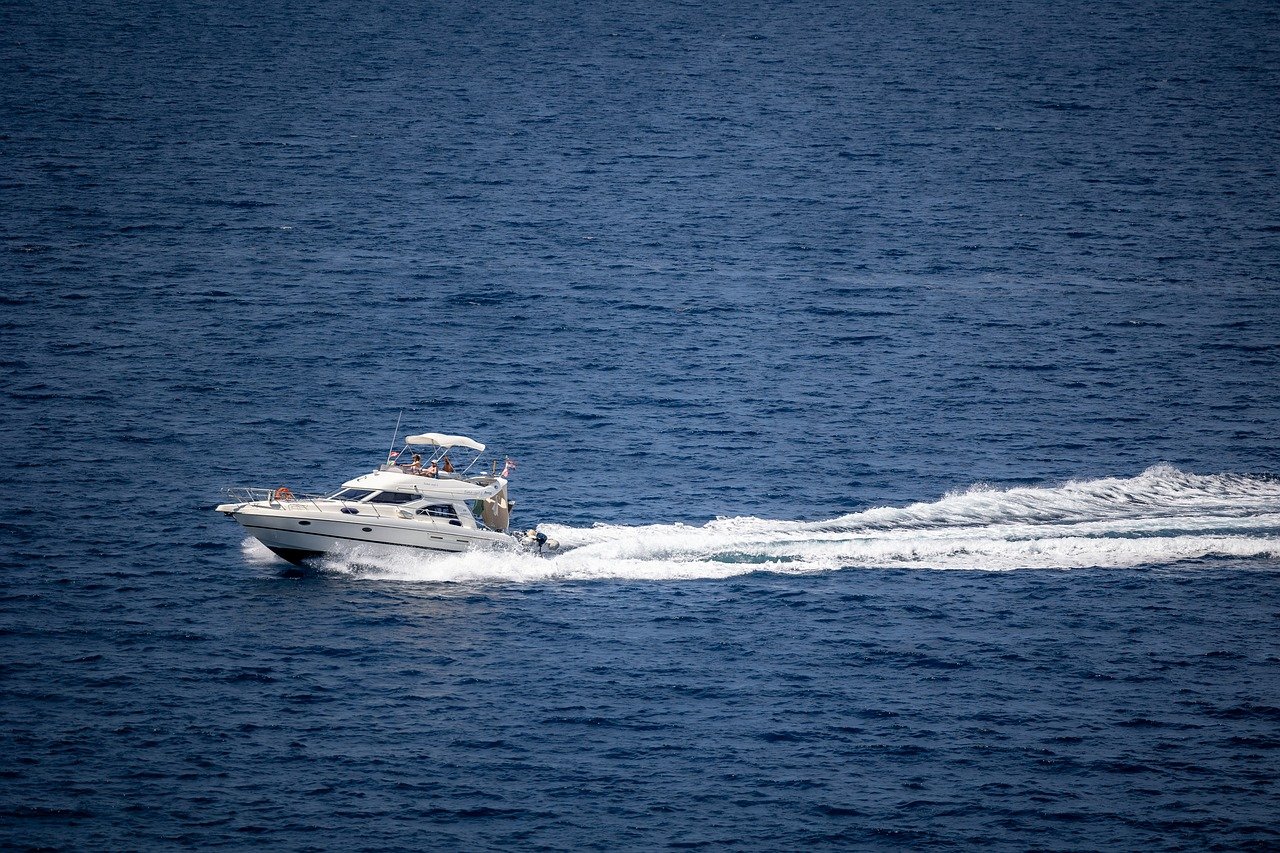
Modular Systems
Available in 17 to 40 GPH - Best for medium to large size vessels.
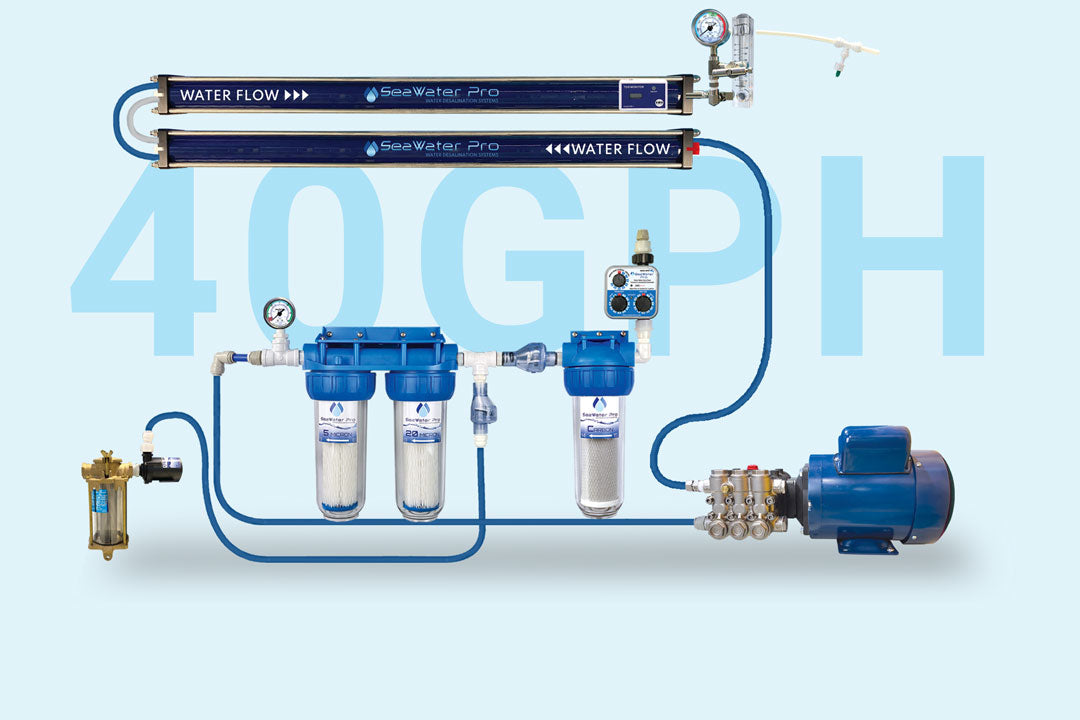
Watermaker: AC 110-220 Volt 970 Watts, 40 GPH Dual Membrane
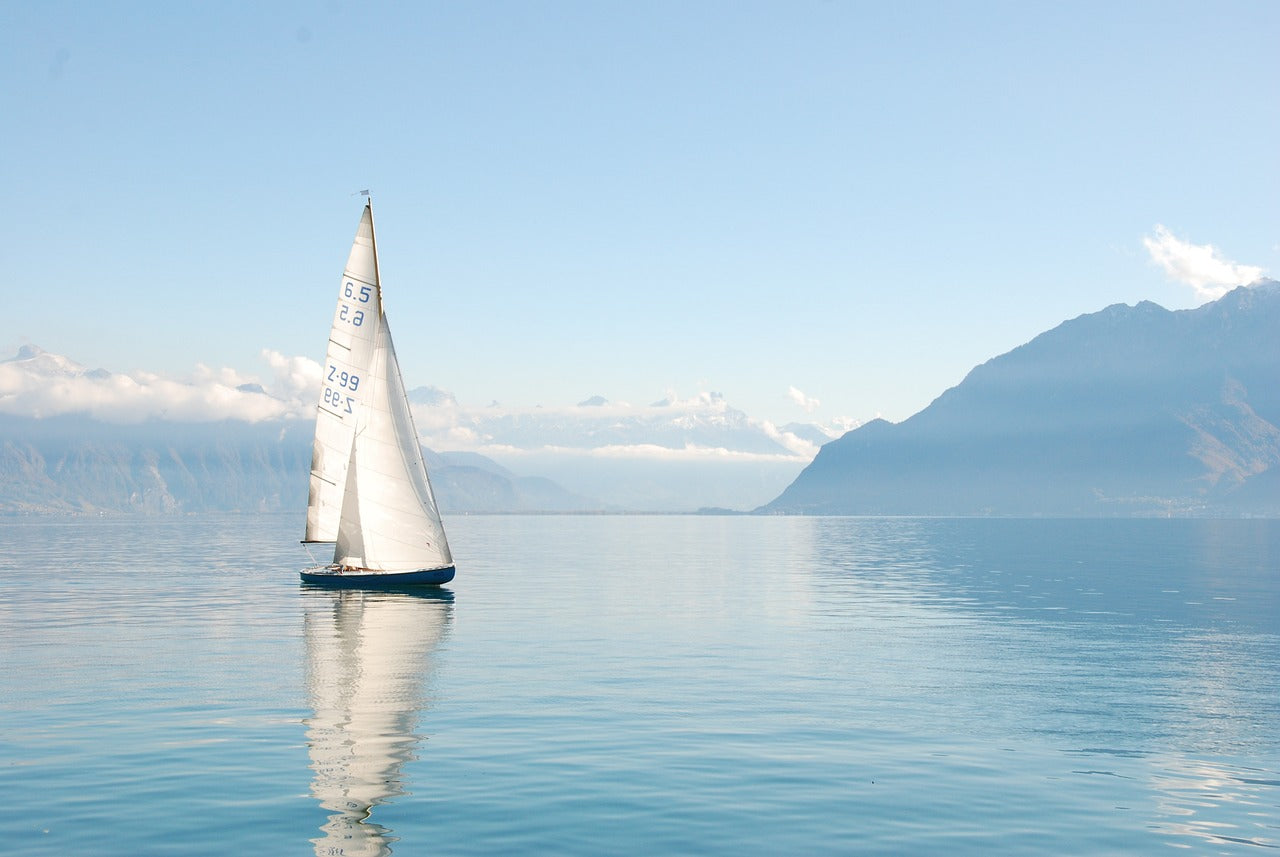
14 GPH - Best for small to medium size vessels.
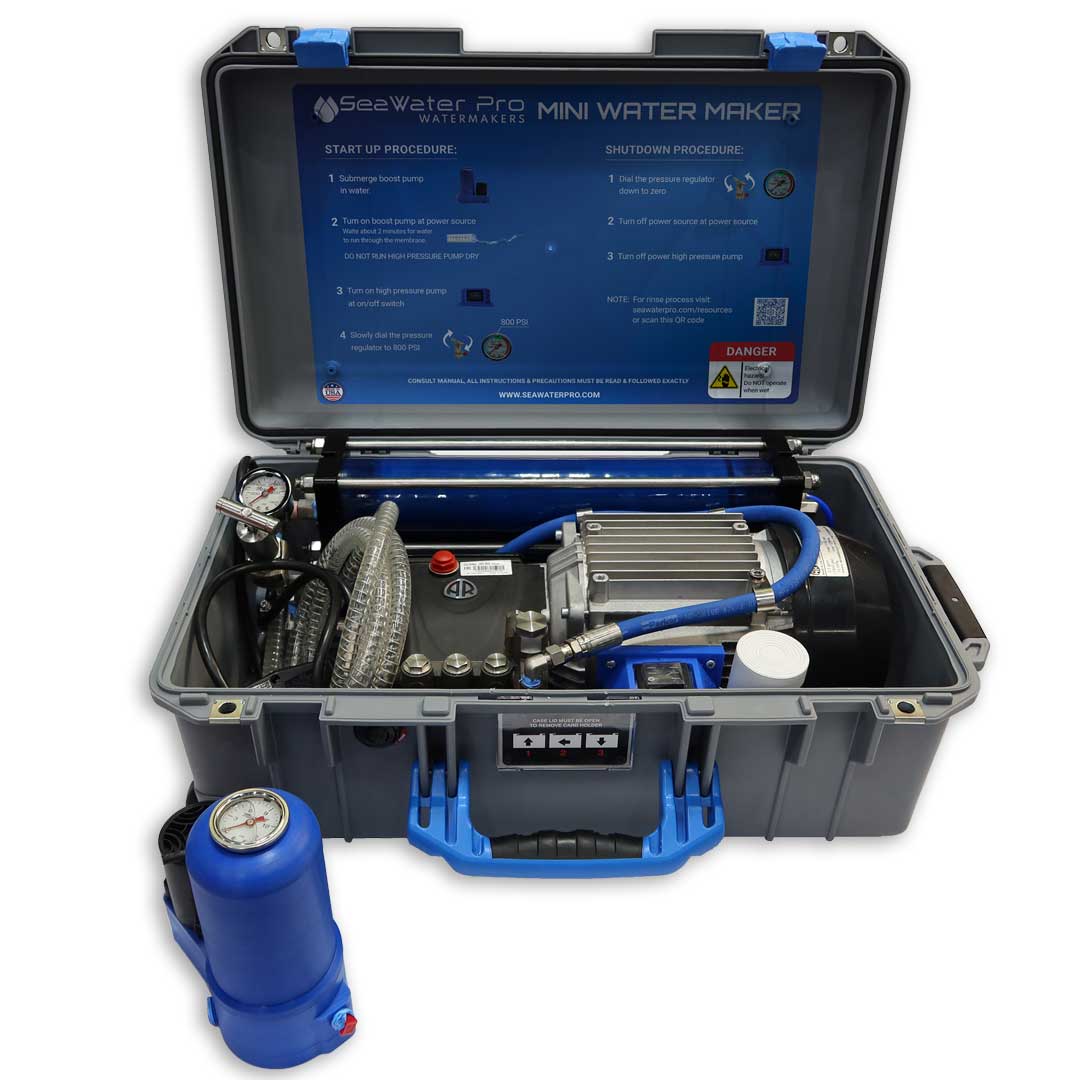
Mini Portable Watermaker AC Powered
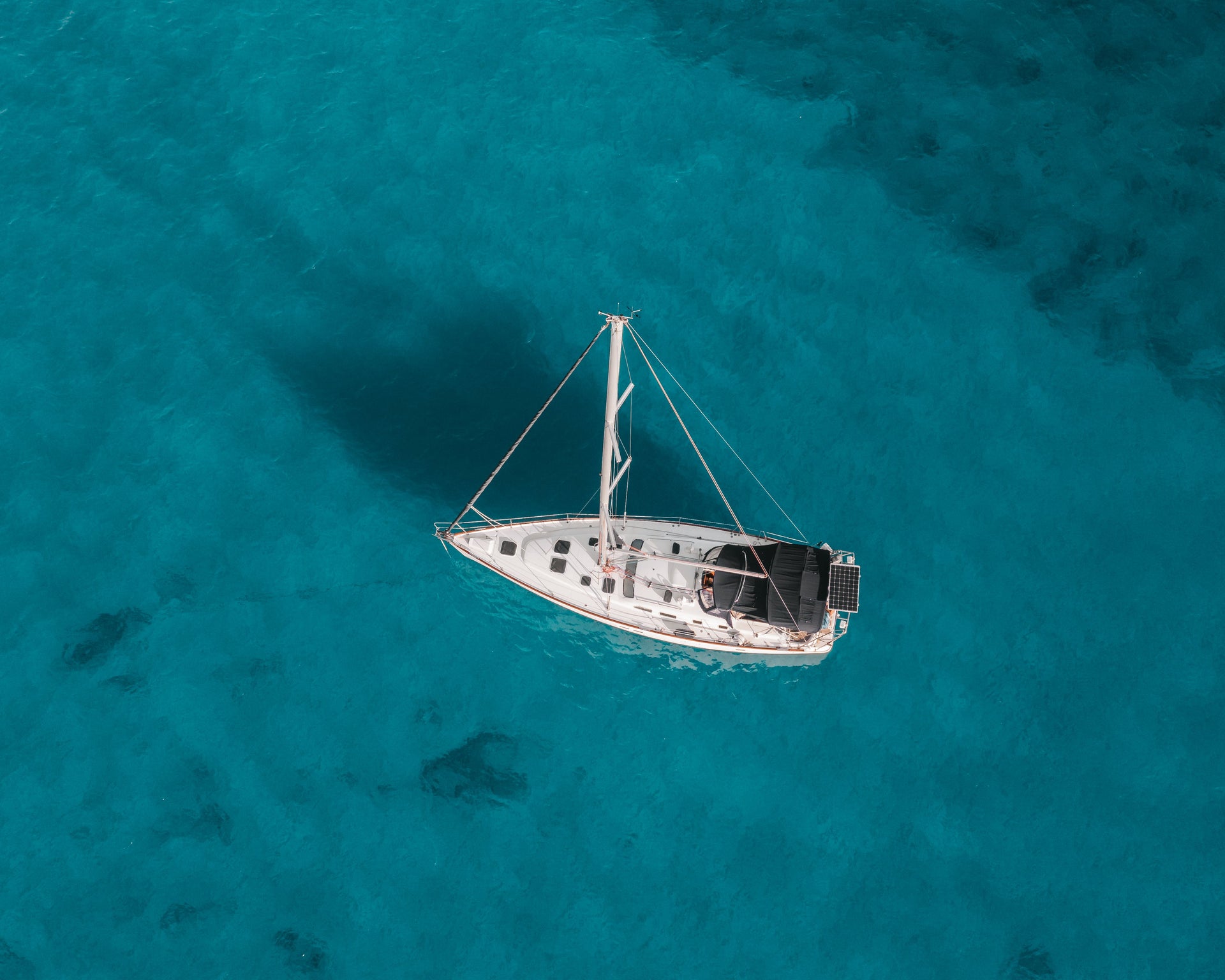
Compact Watermaker
30 GPH - Best for medium to large vessels with limited space.

Plug and Play Piranha 970W/30GPH (22"x16")
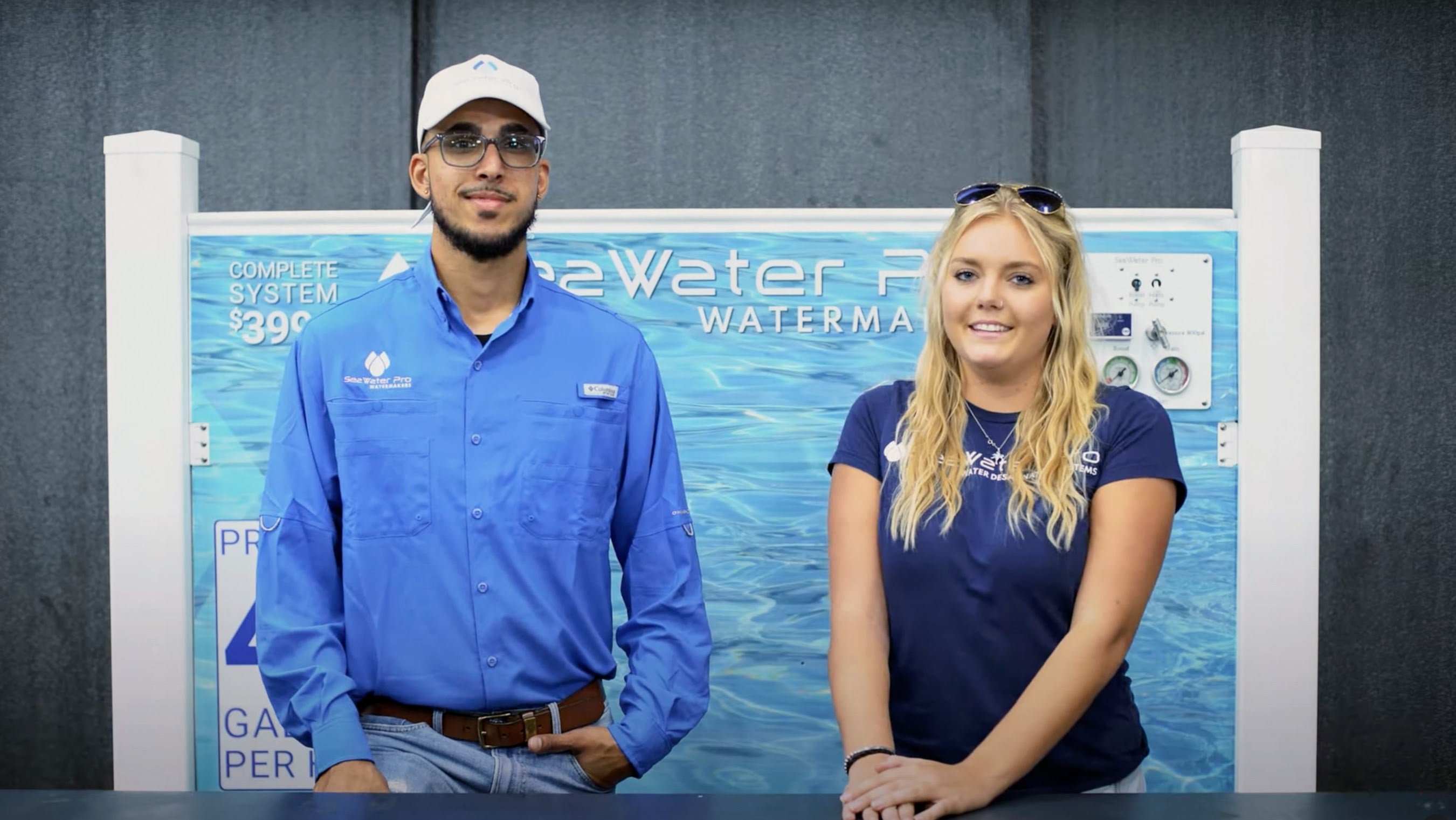
Quick Assembly Video
Customer installations gallery.
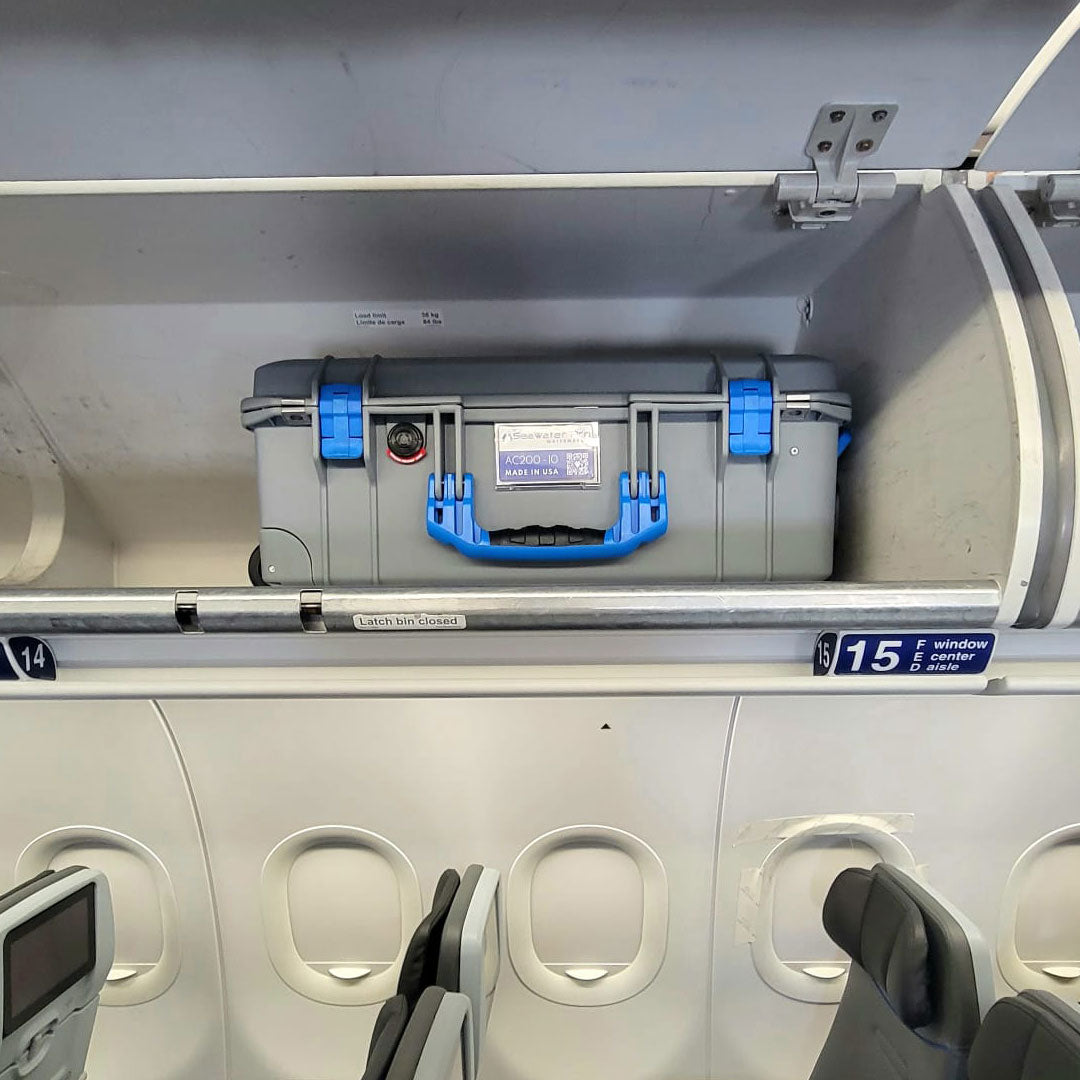

SWP Modular & Portable Watermakers
Welcome to SeaWater Pro, the premier provider of high-quality watermakers for boats and portable watermakers for all your marine adventures. Our cutting-edge technology and reliable products will ensure that you have access to clean, purified seawater wherever you go. With our easy-to-use and reliable watermakers, you can say goodbye to bulky storage tanks or worry about running out of fresh water. Our compact and efficient systems are designed specifically for marine use, making them perfect for boats of all sizes. Whether you're cruising the open seas or anchored in a secluded cove, our watermakers will provide you with a steady supply of fresh, drinkable water. At SeaWater Pro, we understand the importance of safe and clean drinking water while at sea. That's why our portable watermakers are equipped with advanced filtration systems that remove harmful contaminants and bacteria. Look no further than SeaWater Pro for your next, most reliable boating adventure investment!
Latest Articles
Demystify desalination, charting your course: your first steps into the exciting world of the sea industry, perks of staying hydrated with a portable watermaker while camping, how do i know which seawater pro watermaker i'll need for my boat.
- Identifying which power source you'd like to run the system. AC or DC power?
- Determine how many gallons per hour will you need to maintain your lifestyle, 17 or 40 GPH.
How much does each SeaWater Pro System weigh?
Every modular watermaker ships in 2 boxes: The first Box is 48 x 12 x 12, 60 lbs. and the second is 24 x 12 x 12, 37 lbs.
Can I install a SeaWater Pro system myself?
Yes! We have videos and instructions for our customers on the resources page .
Do I need a control panel?
Do I need a control panel? Click to watch video
How do I rinse my system after I use it?
Rinse Timer Setup Guide Click to learn more about using your system's rinse timer!
How often do I need to pickle my watermaker?
How to pickle my SeaWater Pro system! Click to watch our short video guide.
Your Cart is Empty
But your water tank doesn't have to be :)
- Choosing a selection results in a full page refresh.
Yachting Monthly
- Digital edition

Everything you need to know about watermakers
- February 24, 2023
An onboard watermaker will free you from ever worrying again about where your next freshwater stop will be. Andy Pag looks at the latest models available for your yacht

The feeling of autonomy that a watermaker gives a yacht is unique. It transforms that weekend-only cruiser into a go-anywhere, life-on-the-hook, adventure craft, breaking the tether to marinas.
Filling your water tanks at the fuel jetty will always be a cheaper alternative to the eye-watering cost of buying and installing a watermaker, but there will be times when your plans are limited by having no access to a tap or if the only source available doesn’t look particularly appetising. And in the event of a burst pipe or accidentally draining your tank mid-passage, it means you’ll be able to keep sailing at the flick of a switch, rather than having to reroute to refill.
Watermaker desalination process
Watermakers – technically known as desalination units – use a process called reverse osmosis (RO) to make drinking water. By forcing salty water at a high pressure against one side of an RO membrane, fresh water will slowly seep through, leaving the salt and bacteria behind. The output is notably devoid of minerals, but the taste can be a little strange at first. Think of the membrane as a filter so fine that even bacteria and salt molecules can’t get through it.
But as well as the pressure, a membrane also needs to have the water flowing over it to flush away all the stuff that didn’t pass through as it would otherwise block the membrane’s pores. In this way it’s different to a filter because a membrane has a salty inlet, a freshwater output, and a saltier discharge outlet.

Much of the cooking done onboard needs fresh water. Photo: Tor Johnson
High pressure pumps
Creating high-pressure water, which is also flowing at speed, takes a lot of energy, and there are two methods watermakers use to achieve this. One is simple: a high-pressure pump. This can draw a lot of current but it creates the speed of flow needed, and the forceful pressure too. The saltwater is directed to the membranes and the pressure is created by closing down a tap, called a needle valve, at the discharge to build up pressure on the membrane while still allowing water to flow out through the needle valve at the required speed.
High-pressure pump watermakers are fast, but they aren’t the most energy- efficient way of creating clean water. They are usually tuned to produce 60 litres per hour or more but can draw upwards of 500W and while there are 12V versions, they typically use mains voltage pumps and are better suited to being run from a generator than a battery bank.
They’re designed to fill your tanks quickly so you don’t have to run the generator for long. Mechanically, they’re simple, and apart from the high-pressure pump there are no moving parts to go wrong.

A watermaker and its many parts.
Energy recovery
The alternative method is a Clark pump watermaker, also known as an energy recovery device (ERD). This uses a fast-running but much lower-pressure pump which needs less power. To obtain the high pressure required, the pressure in the discharge water is harnessed by a couple of reciprocating pistons and used to boost the inlet pressure. It takes a few minutes to build up pressure and during that time the output is slow and not very clean.
Watermaker running costs
An ERD unit will typically produce 20-60 litres per hour. The lower demand on the pump means it can be reasonably powered by 12V with as little as 9A, and can produce a litre of water with just 4-5Wh of energy. High-pressure units need between two and three times that energy per litre. If you run your boat from solar panels or don’t have a generator, this is the type of watermaker to go for.

Devoid of minerals, the taste can be a little strange at first
In fact, your boat’s power source is the first thing to look at when considering which type of watermaker to get. But it’s also worth remembering that the extra complexity of ERD units make them expensive to buy and more prone to breakdowns.
When choosing an ERD watermaker it’s therefore really important to consider the availability and costs of spare parts because sooner or later they will need servicing.
Most manufacturers have a dealer network that can provide advice, but don’t count on them stocking parts or offering servicing. These machines are notoriously fiddly to repair, and one dealer told me discreetly it’s not financially viable for him to offer a repair service as the time it takes can spiral into hours. That leaves you with the option to send the machine back to the manufacturer at great expense, or do it yourself.
Article continues below…
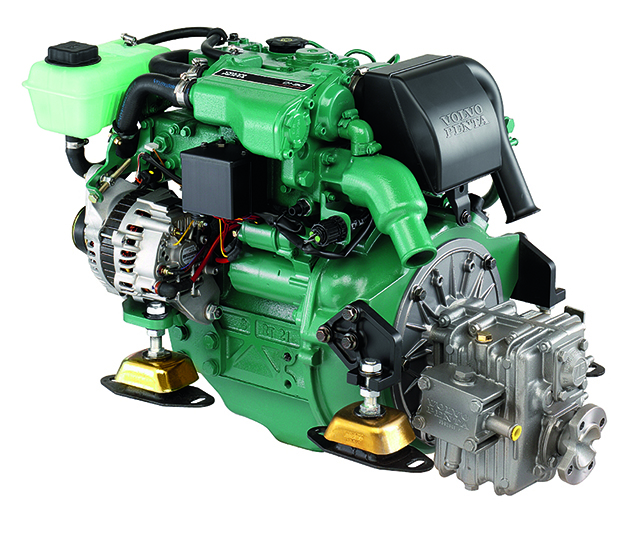
How it works: The diesel engine: The 4-stroke cycle
Understanding how your diesel engine works is key to knowing how to look after it, and fix it when it…

How it works: Looking after fuel: diesel, hoses and filters
Looking after fuel is essential for keeping your engine running smoothly. Callum Smedley shares his top tips
After-sales service
Spectra has one of the best reputations for after-sales service. In most places you’re more likely to find Spectra and Schenker dealers, but that doesn’t guarantee they’ll have parts in stock, and all manufacturers will ship parts to you. Spectra also offers rebuild kits which come with step-by-step instructions and special tools to get to those hard-to-reach O-rings. They feel like a lot of money for a bag of O-rings, but are a cheaper option than sending the unit back to the factory.
If you’re buying new, a warranty is highly valuable but once it runs out you’ll find out how pricey the parts really are. Some manufacturers give longer warranties if a certified technician installs the system.
Most ERD units are made out of engineering plastics such as Delrin which can split around fittings if over-tightened or if warm water is used during cleaning.
One leading UK dealer who sells all brands told me that since Spectra changed the type of plastic used a few years ago he’s had no returns, unlike rival brands. Spectra were tight-lipped on the material they use when Yachting Monthly asked them for details.

An average-sized watermaker will easily squeeze into the space under a bunk
Watermaker instillation tips
A bad installation can render a good machine useless, so there are a few key points to know. Use dedicated through-hulls for the saltwater intake and brine discharge. Make sure the intake is low enough that it won’t be exposed when heeling or in big waves to prevent air bubbles entering the system. Don’t install the intake where there will be turbulent flow, behind the keel, for example, or near the props and rudders. The discharge should be above the waterline.
To give the pump the best chance of producing the pressure needed, install it as low as possible in the boat. Follow the manufacturer’s recommendations on hose diameters and avoid long hose runs and tight turns that restrict flow.
Finally, use correctly sized wiring as the 12V pumps will underperform if there are voltage losses in the wiring.
Monitoring quality
A Total Dissolved Solids (TDS) meter measuring impurities in the output water coupled to a diverter valve can automatically protect the purity of your tank. Anything under 500ppm is fine to drink but a well-installed system should deliver 200-300ppm.
You can buy inline TDS meters, or stick meters that you dunk into a sample cup to monitor it manually. You’ll see it slipping over time if there’s a problem developing with the pump or membrane.

It’s important to flush or ‘pickle’ your watermaker if you decide to not use it for any period of time
Membrane care
The membranes will produce more output and cleaner output in warmer and less salty seas. For the best lifespan, use them every few days. Drying them out, or running chlorinated water through them will do irreparable damage.
According to Dupont, which makes the widely used Filmtec membranes, they should not be left unused for more than 24 hours, but in practice they can be left for around five days before organic growth risks building up on the membrane, which blocks it and reduces performance. This can sometimes be remedied with an alkaline flush if caught early.
The other thing that can block them is carbonate deposits. In this case, an acid flush will restore some of the membrane’s performance.
If idle for a few days, it’s worth flushing the membrane with fresh water. Some manufacturers recommend doing this after every use, but that’s to protect other components in their systems.
If the machine is going to go unused during the off-season, the membrane can be pickled in propylene glycol. Most manufacturers offer branded pickling solutions and restorative solutions which conform to their warranty and don’t react with other materials in the system.
Avoid using the watermaker in anchorages where other boats aren’t using holding tanks. Although the membrane will sift out e.coli, the pre-filters will become a nasty Petri dish of bacteria.

Pickling tablets will be less aggressive on internal metal components
Don’t leave me this way
Different manufacturers have different recommendations, but, as a general guide, here’s what to do if leaving your watermaker unused for any period of time.
1-5 days: In practice, leaving the membrane sitting in saltwater won’t do too much harm, even though the membrane manufacturer warns against more than 24 hours. Check your watermaker manufacturer’s recommendation though. For instance, Spectras suffer from dramatic internal electrolysis if left soaking in sea water.
1-2 weeks: Definitely flush it through with fresh unchlorinated water. Use a carbon filter to remove chlorine if you are flushing with tap water.
More than a month: Pickle it.
They used to recommend using acid (hence the term pickling) but now manufacturers recommend propylene glycol, which is less aggressive on O-rings and other metal components. Buying the branded solution for your machine will give you peace of mind.
If your boat lives in relatively clean water, think about setting a timer so the machine runs automatically every few days for 10-15 minutes. That’s long enough to flush the membrane and prevent organic build-up.
Enjoyed reading this?
A subscription to Yachting Monthly magazine costs around 40% less than the cover price .
Print and digital editions are available through Magazines Direct – where you can also find the latest deals .
YM is packed with information to help you get the most from your time on the water.
- Take your seamanship to the next level with tips, advice and skills from our experts
- Impartial in-depth reviews of the latest yachts and equipment
- Cruising guides to help you reach those dream destinations
Follow us on Facebook , Twitter and Instagram.
- New Sailboats
- Sailboats 21-30ft
- Sailboats 31-35ft
- Sailboats 36-40ft
- Sailboats Over 40ft
- Sailboats Under 21feet
- used_sailboats
- Apps and Computer Programs
- Communications
- Fishfinders
- Handheld Electronics
- Plotters MFDS Rradar
- Wind, Speed & Depth Instruments
- Anchoring Mooring
- Running Rigging
- Sails Canvas
- Standing Rigging
- Diesel Engines
- Off Grid Energy
- Cleaning Waxing
- DIY Projects
- Repair, Tools & Materials
- Spare Parts
- Tools & Gadgets
- Cabin Comfort
- Ventilation
- Footwear Apparel
- Foul Weather Gear
- Mailport & PS Advisor
- Inside Practical Sailor Blog
- Activate My Web Access
- Reset Password
- Customer Service

- Free Newsletter

How to Perform Your Own Pre-Buy Inspection
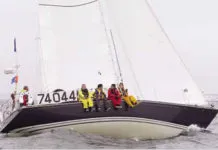
C&C 40 Used Boat Review

Sabre 386 Used Boat Review
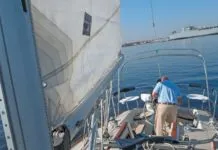
What You Can Learn on a Quick Test Sail

Preparing Yourself for Solo Sailing

Your New Feature-Packed VHF Radio

Preparing A Boat to Sail Solo

Solar Panels: Go Rigid If You have the Space…

Ground Tackle Inspection Tips

Shoe Goo II Excels for Quick Sail Repairs

When Should We Retire Dyneema Stays and Running Rigging?

Rethinking MOB Prevention

Is It Time to Get an Electric Dinghy Motor?
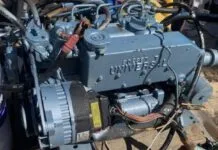
Worship Your Universal M-Series Diesel With the Marinized Kubota Block

Taking Care of Your 12-Volt Lead-Acid Battery Bank

Hassle-free Pumpouts

Battle of the Teak Cleaners — Snappy Teak-Nu vs. Star Brite

New Seacocks for the Offshore Sailor

Bottom Paint Care

Quick and Safe Sail Cleaning

Are E-bikes Worth the Extra Weight and Cost?

How to Handle the Head

The Day Sailor’s First-Aid Kit

How to Select Crew for a Passage or Delivery

Re-sealing the Seams on Waterproof Fabrics

Waxing and Polishing Your Boat

Reducing Engine Room Noise

Tricks and Tips to Forming Do-it-yourself Rigging Terminals

Marine Toilet Maintenance Tips

Learning to Live with Plastic Boat Bits
- Belowdecks & Amenities
- Marine Electronics
- Systems & Propulsion
Test of Six 12-volt Watermakers
While at first blush all appear about the same size, we find important differences in output and current consumption. the spectra 180 is amazingly efficient but expensive. of the six, village marine tec's little wonder seems the most tried and true..
Last month we took an overview of the pros and cons of 12-volt watermakers. This month, we look at high-output machines from five manufacturers, ranging from systems from industry giants such as Village Marine to small shops such as SK Engineering. All of the watermakers we looked at were production models, although the Spectra 180 we tested had been re-configured to serve as a demonstration model.
As we began our market survey and field testing, we discovered that a number of other manufacturers are jumping into the fray, realizing that 12-volt watermakers constitute a small but growing segment of the market. Most notable among these new players is HRO-another industry giant-which has been promising a state-of-the-art, computer-controlled, self-contained 12-volt watermaker for more than a year. We saw the literature a year ago at the Miami Boat Show. We saw a non-operational mockup last fall at the Southampton, England boat show. We have yet to see a functional machine in the flesh.
With the assistance of Andy Cortvriend of Ocean Link, a knowledgable Portsmouth, Rhode Island, marine servicing company, we tested product output, water quality, and electrical consumption of all the watermakers. Electrical consumption was measured with a Cruising Equipment amp-hour meter, using gel cell batteries maintained at full capacity by a Heart inverter/charger between tests.
Saltwater was pulled from lower Narragansett Bay into a large storage tank maintained at a constant temperature during the tests. The waters at our Little Harbor test facility are not as clean as open ocean waters, but are closer to the reality of the watermaking most cruisers will experience. This was not a pure laboratory test with manufactured sea water of exactly the right total dissolved solids (TDS).
We then examined each machine carefully on the bench, looking for weak points, strong points, potential installation or maintenance hang-ups, and general quality of construction.
The quality of output water was tested with a TDS meter and all machines easily met standards for potability.
The real test of any watermaker is how it performs over time-not just months, but years. Because maintenance is a key factor in longevity and trouble-free operation, the owner/operator will bear a large portion of the responsibility for the long-term success of any watermaker installation.
Here are our findings.
Village Marine Little Wonder When Village Marine Tecs Little Wonder was introduced almost a decade ago, it was the first 12-volt watermaker that actually had the capacity to supply the water needs of a medium-sized cruising sailboat without almost continual running. More than 1,500 of these compact, well-made machines have been produced, and there have been virtually no changes to the design or components over the entire production run.
Both 12-volt and 24-volt models are available, with the higher voltage model producing slightly more product flow.
The standard model is totally self-contained in a well-designed package, with all components bolted to a heavy aluminum chassis, topped off with a removable aluminum cover. Mounting requires drilling through the chassis for suitable through-bolts.
The three plumbing connections-feed water, product water, and brine discharge-are pre-plumbed through one end of the case. The wiring junction box also contains connections for an optional feed water boost pump, and an internal 25-amp breaker to protect the electrics.
Although the package is tightly plumbed, there is reasonable space between components for service.
Power for the high-pressure pump is provided by a continuous-duty 1/4-hp. Pacific Scientific motor, rated at 21.5 amps at full power. The motor is connected to the high-pressure pump by a lightweight cogged belt.
The heart of the Little Wonder is its proprietary high-pressure pump, specially made by Village Marine for this machine. It features a titanium pump head with ceramic plunger-a combination which should be corrosion-proof for the life of the watermaker. All wetted parts in the pump are titanium, type 316 stainless steel, or ceramic. High-pressure plumbing and connectors are type 316 stainless.
Monitoring includes a high-pressure gauge and product flow gauge. System pressure can be adjusted if necessary using an open-end wrench, although the factory pre-set pressure of 800 psi should be correct for most watermaking situations. The pressure regulator is a high-quality regulator, rather than the more commonly seen needle-valve adjuster.
The fiberglass pressure vessel and the standard-sized 2521 membrane are both manufactured by Village Marine, although they are industry-standard in size.
In our tests, the Little Wonder produced a product flow of 5.8 gph at 13 volts, drawing 16.7 amps-about 37.4 watts per gallon. This does not include the 1-amp current draw of the small optional booster pump, which is required for above-the-waterline installations, long feed water runs, or installations containing multiple pre-filters.
The water produced by the machine we tested was very high quality. The noise level of 79 dB, with the cover removed, was louder than the two quietest machines tested, but was not loud enough to be objectionable.
The self-contained unit is 25.5″ long, 11″ wide, and 9.25″ high, and requires a slightly larger mounting space to accommodate plumbing connections and allow access for removal of fastenings holding the cover. For tight installations, a modular version is available, which does away with the mounting chassis and uses flexible high-pressure hoses rather than rigid stainless steel tubing. Obviously, installation of the modular unit requires slightly more time, but offers a lot of flexibility-very desirable in field installations aboard the typical cruising sailboat, in which locker or shelf space is at a premium.
Documentation is excellent, with a 35-page manual covering installation, operation and maintenance.
The warranty is somewhat complex. The membrane has a three year warranty, the pressure vessel a lifetime warranty, the high pressure pump a one-year warranty-although some of its internal components have only a 90-day warranty-and the electric motor 12 months. You need a flow chart to keep it straight.
The Little Wonder comes with pre-filter, three-way cleaning valve, basic plumbing connectors, and a membrane cleaning kit. You supply PVC hose, hose clamps, and the wiring connection. Options include the boost pump (standard with the modular version, $144 for the self-contained version), a three-way sampling valve ($38), a pre-plumbed fresh water flushing system ($150), hand-held salinity meter ($49), and spares kit for extended cruising ($199). For long-range cruising, all of these options are nearly essential for any properly installed watermaker.
List price of either the self-contained or modular 12-volt Little Wonder is $3,195. It is available at slight discounts through some mail-order catalogs, and there are periodic promotions at boat shows featuring special prices and thrown-in options.
Weight of the self-contained system is 63 lb. (The modular system weighs 48 lb.)
Village Marine will soon introduce a higher-output version of the Little Wonder, a 1/3-hp. watermaker in almost the same package size. Current draw, however, will be about 26 amps, requiring heavier wiring and perhaps a look at your battery capacity and charging capabilities.
Bottom Line: There are quieter 12-volt machines, more efficient ones, cheaper ones, and others that put out more water. The Little Wonder, however, has a combination of features-ease of installation, relatively low current draw, high quality components, and a 10-year track record-that is hard to beat. You can’t go wrong with this watermaker.
SK Engineering DC 150 SK Engineering is a small watermaker manufacturer based in Ft. Pierce, Florida. They do virtually no advertising, go to few boat shows, and have a very low-overhead operation geared to the Florida market. While most of their units are AC-powered, their DC 150 is a 12-volt model with a nominal output of 6 gallons per hour.
The DC 150 is powered by a 1/3-hp. continuous-duty Pacific Scientific motor rated at 26 amps. This is a larger version of the motor that powers the Village Marine Little Wonder.
The membrane is a standard 2521, and the pressure vessel appears identical to that used by Village Marine. All high-pressure fittings are type 316 stainless, as is the rigid high-pressure plumbing.
A Giant high-pressure pump provides pressure for the system. This is a standard industrial pump with a stainless steel pump head. A complete servicing manual for the pump is provided.
This is an open-frame system, with the components mounted on a heavy aluminum chassis. The footprint is 18.5″ x 12.5″, with a height of 8.5″. The pressure vessel is mounted on the outside of the chassis, increasing overall dimensions to about 25″ long outside the footprint of the mounting frame. Rubber vibration mounts are provided to isolate the chassis, reducing noise and vibration.
System pressure is user controllable via a knob-operated valve on the panel. Monitoring capabilities include system pressure and product water flow.
In operation, the DC 150 was one of the quietest machines tested, producing a maximum of 72 dB of noise. Product flow of the test machine was 6.5 gallons at 800 psi, with the motor drawing 21.3 amps at 13 volts. This translates into electrical consumption of 42.6 watts per gallon of water produced. As with other systems, adding a booster pump for above-waterline installations would add to total current draw. SK states that the system will operate without a booster pump in installations up to 2′ above the waterline.
One of the nicer features of this machine is the availability of a remote operating panel. This option allows routine operation of the system without direct access to the watermaker itself, which greatly increases installation flexibility.
The system is supplied with a pre-filter with a vacuum gauge, allowing you to monitor the condition of the filter without opening the housing. A freshwater flush kit-highly-desirable in any installation-is a $125 option. The 12-volt booster pump, drawing 1 amp, is a $120 option. An extensive cruising kit, including 12 pre-filters, rebuild parts for the high-pressure pump, cleaner, preservative, and other spares, costs $330.
SKs pricing is very competitive. The self-contained DC 150 has a list price of $2,740, but has a discount price-which we suspect would be available to most sailors who approach the manufacturer directly-of $2,350. The remote panel version has a discount price of $2,450, although the list price jumps to $3,140.
The system documentation is basic, but adequate. Total system weight is 74 lbs.
Being a small manufacturer, SK has a limited network of regular servicing dealers, but since all the system components are essentially off-the-shelf items, any good watermaker technician could repair the unit if necessary.
This is a quiet system with high-quality components and a great deal of installation flexibility when coupled with the optional 8″ x 8″ remote panel. Its open-frame design is easily serviced, although the package is not as neat as a totally enclosed package like the Little Wonder.
Bottom Line: With its 1/3-hp. motor, electrical installation will require careful thought, and you will need to look at your entire charging system and battery capacity a little more closely than you would with a 1/4-hp. machine.
The low price makes this system worth looking at. It is simple, soundly engineered, and utilizes good quality, standard components that are easily serviced. The only potential drawback is the small size of the manufacturer, which might limit long-term support.
PUR PowerSurvivor 160E The PowerSurvivor 160E is PURs entry into the high-output 12-volt watermaker market. It is the latest in a long line of machines that dates back to the PowerSurvivor 35, the first practical small 12-volt watermaking system.
The 160E uses a standard 2521 membrane in a proprietary housing. It is a dead-simple modular system, utilizing a Leeson 1/3-hp. motor directly coupled to a proprietary stainless steel high-pressure pump. Flexible high-pressure hose between the pump and the pressure vessel allows a great deal of mounting versatility, including bolting the entire system to a bulkhead. All high-pressure fittings are 316 stainless steel.
At 54 lbs. for the entire system, this is one of the lightest high-output watermakers we tested.
When we say dead-simple, we mean it. Other than the pressure bypass valve and the on-off switch-which you provide-there are no gauges to monitor, no product flow meter, and no means of adjusting system pressure, which is pre-set at the factory and is not intended to be user-adjusted. You would still, of course, install the product sampling valve, cleaning valve, and pre-filter, just as with all other units.
The 160E is a gravity feed system, and can only be installed below the waterline.
Our test machine produced 6.5 gallons of water per hour, drawing 17.3 amps at 13 volts-less than we would expect for a 1/3-hp. system. This yields an energy consumption of 34.6 watts per gallon of water-more efficient than average for the watermakers in our tests.
There are several drawbacks to the PowerSurvivor 160E. First, the system is the noisiest of any we tested, putting out 80 dB at our standard test distance of 1′. Furthermore, the reciprocating drive system of the high-pressure pump produces not a steady noise, but one punctuated by a loud popping sound at one stage of the piston stroke. We would recommend mounting this watermaker in a sound-insulated compartment if possible.
The reciprocating pump also produces pulsing in the systems hoses, which should be well-secured to prevent fatigue over time.
This is one of the more expensive watermakers we tested, with a list price of $4,440. Several discount marine catalogs sell the 160E for as low as $3,800. Options include a repair seal kit ($80), an extended cruise kit ($200), and an extensive preventative maintenance package ($420).
On the plus side, routine service of the system, including replacement of high-pressure pump seals-a requirement every 1,000 hours of operation-is simple and well-documented in the excellent instruction manual.
We also looked at two other units from PUR, the PowerSurvivor 80II modular and the newly-designed PowerSurvivor 40E. The 80II is very similar to the 160E, simply scaled down. We did not test it, but since all the other PUR machines met the manufacturers specifications, we expect this one to do the same. The smaller-diameter membrane of the 80II limits you to membranes from the machines manufacturer. It lists for $3,330, and is routinely discounted to about $2,950-about the same as the higher-output Little Wonder.
The PowerSurvivor 40E is the totally re-designed successor to the PowerSurvivor 35, the original high-output 12-volt watermaker. In our tests, its 1/18-hp. motor drew 4.8 amps, producing about 1.6 gallons per hour, consuming 39 watts per gallon of water. It is very compact, and like all PUR watermakers, easy to service and operate.
At 72 dB, its noise level was the equivalent of the quieter large 12-volt machines.
With its light weight (25 lbs.) and tiny footprint-about 15-1/2″ x 15″ x 6″ high-the 40E would be the most suitable watermaker for a single sailor or a couple cruising on a small or very light boat-a multihull, for example-with limited electrical generating capacities, perhaps just a few solar panels and small batteries.
In an emergency, the motor can be disconnected from the 40E, and it can be operated manually by a handle, just like its Survivor 35 predecessor. Because virtually all the parts of the 40E are proprietary, including the pressure vessel, membrane, and pump, you will only be able to service the units with parts from PUR.
List price of the 40E is $2,220/$1,900 discount, with options analogous to those available for larger PUR machines.
Bottom Line: All three of these smaller watermakers are actually the core business for PUR, and fill specific niches where there is no competition. Although the 160e is an easily serviced watermaker, and is more efficient than average, its high price and noisy operation are drawbacks. If the installation flexibility of the 160E is not essential to you, we think there are other 12-volt watermakers of similar capacity and quality of construction that offer better value.
Caribbean Technology The Caribbean Technology YM-200 DC 12 made by Great Water is the highest-capacity 12-volt watermaker we tested. Its rated output of 10.2 gph at 800 psi significantly exceeds that of most of the watermakers in our test.
In many ways, this modular system mimics both the output and sophistication levels of more mainstream engine-driven or 110-volt systems, including a direct drive high-pressure pump, high and low pressure automatic shutoff, and a sophisticated remote operating panel including power switch, pressure regulator, and gauges for system pressure, product water flow, and brine flow.
Power is provided by a 1/2-hp. continuous-duty motor directly coupled to a stainless steel Wanner Hydracell industrial pump. An instruction manual for the pump leads you through the periodic maintenance required. A new oil venting system in the pump claims to have eliminated an earlier tendency of Wanner pumps to weep oil.
A Codeline pressure vessel holds a standard 2521 membrane. Because this is a modular system, high-pressure plumbing includes flexible hose rather than rigid tubing. All fittings are 316 stainless steel.
A Flojet boost pump is standard, allowing the system to be mounted above the waterline. This pump-actually designed as a shower drain pump-adds 3.6 amps to the current draw of the system.
A product flow rate of 10.2 gph is pretty much the absolute capacity of a 2521 membrane, and our test system had no trouble achieving that rate of flow. The downside is that to achieve this flow, the electrical demands of the system are much higher than any other watermaker we tested: 38 amps at 13 volts, or 48.4 watts per gallon.
You would never run this system without running the engine at the same time. The current draw is high enough to drop system voltage down instantly. In all fairness, for maximum efficiency none of the systems drawing 15 amps or more should be operated without running the engine at the same time.
Because of the high current draw, your charging system should be equipped with a big alternator if you choose this watermaker. To take advantage of the big alternators capacity, youll want a big bank of batteries. The system will probably need a 50-amp circuit breaker separate from the main panel, as many main panels do not have service wiring that is really heavy enough for this type of load.
You will also need heavy wiring between the circuit breaker and the systems electrical relay box. The manufacturer recommends 4-gauge wiring, which is heavy and may in some cases be difficult to run.
Obviously, a great deal of planning and thought is required before installing a system of this capacity and with these electrical requirements.
On the plus side, the fully modular design allows the system to be mounted in a surprisingly small space, essentially little more space than is required by a modular 6-gph system.
Weight of the YM-200 is 83 lbs.
The manual includes excellent system schematics, and reasonably thorough instructions for installation, operation, and maintenance of the watermaker.
As you might expect, the size of the pumps and motors result in a fairly noisy system: 80 dB at a distance of 1′ from the high-pressure pump-the big noisemaker in any system. Due to its weight, electrical needs, and noise, the best location for this watermaker is a sound-insulated engine room or compartment, as close as possible to the ships electrical supply.
Bottom Line: The best application for this system is a larger boat with existing electrical capacity, and lacks a genset or a means of installing an engine-driven watermaker.
With a list price of $3,500-which is sometimes discounted through dealers-this is not an expensive system. In fact, on a dollar cost per gallon of water produced per hour basis, this is the cheapest system of the entire lot to purchase. It is not an electrically efficient system, but if the maximum output in the minimum time is your primary criterion in a 12-volt watermaker, the Caribbean Technology is definitely worth considering.
Spectra 180 The Spectra 180, and a few variations on its basic version, are the only watermakers produced by Edinger Marine Services. It is radically different from other 12-volt watermakers, extracting a lot of freshwater with astonishingly low power consumption.
When you first see the Spectra 180, your first impression is that one component-a big DC motor to power the high-pressure pump-has been left out. In fact, the entire system is powered by a small 12-volt pump and motor-about 1/8-hp.-no larger than the water pressure pump on a 35-footer. This is possible due to the unique design of the Clark pump, a remarkably energy-efficient pump created specifically to power this watermaker.
The Clark pump is totally unlike any other high-pressure pump used in watermakers. To oversimplify, the Clark uses two opposing pistons and cylinders with a single connecting rod. System pressure is created by the connecting rod driving the piston into the opposite cylinder. Without a detailed technical explanation of exactly how any why this works, it is fair to say that compared to other methods of creating adequate pressure for reverse osmosis, this is a remarkably energy-efficient system.
The Spectra 180 is also different from other watermakers in that it uses a standard full-size membrane whose pressure vessel is just over 44″ long-almost twice the length of the pressure vessel containing the 2521 membrane used by all the other high-capacity systems in out tests. Mounting this much longer pressure vessel may present problems in some boats. The Clark Pump housing itself is almost as long as the pressure vessel for a 2521 membrane.
According to the manufacturer, they have torn down Clark pumps after 3,000 hours of operation and found no significant wear. In any case, the pump is easy to overhaul in the field by a reasonably proficient owner. An overhaul manual for the pump is part of the system documentation, which is basic but adequate.
This is a modular system, with a remote control panel that can allow basic operation without direct access to the other system components. Total weight is about 51 lbs.
Our test system was a factory demonstrator, configured as a self-contained frame system with some performance compromises compared to the correct, conventional modular installation. Instead of a single large membrane, our test system utilized two 2521 membranes, similar in flux area to the larger membrane.
From a pure electrical efficiency perspective, the Spectra 180 was the most impressive watermaker we tested. With a current draw of 8.6 amps at 13 volts, our test unit pumped out fresh water at the rate of almost 9.5 gph–almost as much as the Great Water system, which draws almost five times as much power. Thats only 11.8 watts per gallon, by light years the most electrically efficient machine in our test.
In addition, at a noise level of 65 dB, this was the quietest system.
The Spectra 180 is not perfect, however. The system runs at low pressure compared to other systems-just 600 psi with our 70F water temperature-and the product water, although perfectly acceptable, had the highest total dissolved solids in our tests. Since product water quality can vary with different membranes, we are reluctant to attach much significance to this slightly lower water quality, which was still well within standards for drinking water.
We have some concerns about the relatively low feed water flow rate through the big membrane. The more water that passes over a membrane, the better it likes it, according to most manufacturers. The Spectras flow rate of about 90 gph is quite small for the large membrane, and we do not know how the longevity of the membrane might be impacted by this.
The ends of the main block of our systems Clark pump were machined from bronze, and showed some signs of surface oxidation at the interface to the Delrin main block. According to the manufacturer, future editions of the Spectra will have stainless steel components in place of bronze.
Likewise, the pressure relief needle valve on our test system dribbled when it was barely cracked open. We were told that this component has also been re-designed.
Our test system utilized brass high-pressure fittings, rather than the type 316 stainless used by every other manufacturer. Some manufacturers claim that the only reason to use brass is to save money, while others admitted to us, a bit reluctantly, that they had never seen a brass high-pressure fitting with significant corrosion, and stainless was generally used for appearance and galvanic compatibility as much as for longevity purposes.
Given the cost of the Spectra 180, we think you should get type 316 stainless fittings, and type 316 pump block components. The price of the Spectra 180 is $4,650, the highest of any machine we tested. You pay a significant premium for a major increase in electrical efficiency. Service, parts, and options prices are similar to those of other manufacturers: $350 for a long-term offshore service kit, for example. The price of the installation kit-$275-strikes us as a bit high for such parts as the three-way servicing and diverting valves that some other manufacturers include in the price of the basic system.
According to the manufacturer, although the system is fully functional and in production, they are still looking at further developments, including a composite Clark pump that would have no metal components. Relatively few of these machines are in use in the field at this time, as the product is quite new to the market.
Bottom Line: The most attractive feature of this system is its energy efficiency. We are less impressed by its price, and by the fact that it would appear to be a system with some room for refinement. However, if being able to run a watermaker without running the engine at the same time is important to you, and if price is less important than electrical efficiency, the Spectra 180 would be the choice among the systems we tested.
Conclusions/Recommendations Because virtually every cruising boat has different needs, priorities, and installation requirements, no single high-capacity 12-volt watermaker is going to fit the bill for every sailor. These are all well-designed, fully functional machines. Each has specific advantages and disadvantages, which we have described.
All meet their manufacturers performance specifications in terms of electrical consumption and product water output. Variances of +/- 10% to 15% from the manufacturers specifications for performance are normal.
The variations in product water quality we found are not significant. All the watermakers produce water that meets international standards for potability. The quality of the water will vary over time with any watermaker and with any membrane. A simple hand salinity tester-available from most watermaker manufacturers-is all that is required for routine checking of water quality. Most owners who use their watermakers daily don’t even bother testing salinity. They start the machine, let it run for a few minutes, taste the water, and if it tastes good, divert it to the tank.
All watermakers have similar maintenance requirements, and all we tested are reasonably easy to service. Your choice of a specific system will be largely the result of specific requirements for your boat and your cruising. The key questions are the amount and shape of space you have for the watermaker, the existing or planned electrical generating and battery storage capacity of your boat, and the amount of water you must make in a specific time frame.
All watermakers are maintenance-intensive. To a large extent, the long-term, hassle-free operation of a watermaker is a function of where and how it is used, and how religiously routine maintenance is performed. None of these machines will stand abuse.
A freshwater flushing system is an important component of a watermaker installation. Of the machines tested, only Village Marine and SK Engineering offer a ready-made freshwater back flush system as an option. While it is an easy system to design and build for anyone capable of installing a watermaker, it should be offered and recommended as an option by other manufacturers as well.
None of these systems is beyond the installation capabilities of a reasonably handy boat owner. If space permits, a totally self-contained system such as Village Marines Little Wonder will be slightly easier to install, but the total difference in installation time between self-contained and modular systems should not be more than a few hours unless there are vexing component mounting problems to solve. Plumbing and wiring connections are essentially the same for modular and self-contained systems, although a modular system with a remote panel will certainly take the longest time to install because of the number of individual components that must be placed.
All installations require attention to detail, particularly when it comes to wiring. We would not recommend you install a watermaker as the first major project you undertake on your boat, since it will require putting in a through-hull, installing heavy-duty wiring, and completing some plumbing that may in some boats be more difficult than it may first appear.
While all watermakers are covered by manufacturers warranties, all specifically exclude damage due to abuse in operation, poor maintenance, or improper installation.
A watermaker is not a use-it-and-forget-it product. Its for those who live aboard. If you don’t use it regularly and maintain it properly, you are wasting your money, and you shouldnt own one. On the other hand, if you are willing to accept the responsibility of maintaining a fairly demanding piece of equipment, a 12-volt watermaker can give you-particularly if you are a cruising sailor who desires long-term independence from shore-a degree of freedom you may not otherwise find.
Contacts- Edinger Marine Service, Inc., 298 Harbor Dr., Sausalito, CA 94965; 415/332-3780, fax 415/332-8527. Great Water, Inc., 5148 Peach St. Erie, PA 16509; 814/838-0786, fax 814/838-8700. Ocean Link, 52 Maritime Dr., Portsmouth, RI 02871; 401/683-4434. PUR, Recovery Engineering, 9300 75th Ave. North, Minneapolis, MN 55428; 800/845-7873, fax 312/315-5505. SK Engineering, 4256 N. US 1, Suite 1, Ft. Pierce, FL 34946; 800/489-0852, fax 561/489-0808. Village Marine Tec., 2000 West 135th St., Gardena, CA 90249; 800/421-4503, fax 310/538-3048.
RELATED ARTICLES MORE FROM AUTHOR
Excellent article, thank you for the research and detailed info.
Agree! Thank YOU
I really appreciated reading your recommendation, especially power consumption from one manufacturer to the other.
I am some how confused with Spectra manufacturing and Katadyn. I thought it was all Katadyn for some time now. When was this test done?.
Great review, except it would have been helpful to have specific TDS figures for the output in each case.
The contact information for SK engineering is wrong. Went to some health insurance company that sounded like a scam.
LEAVE A REPLY Cancel reply
Log in to leave a comment
Latest Videos

Tayana 37: What You Should Know | Boat Review

Monitor Your Whole Boat From Home On A Mobile App

Beneteau 423: What You Should Know | Boat Review

Buying A Sailboat Is Scary! Yacht Broker Interview
- Privacy Policy
- Do Not Sell My Personal Information
- Online Account Activation
- Privacy Manager

Please verify you are a human
Access to this page has been denied because we believe you are using automation tools to browse the website.
This may happen as a result of the following:
- Javascript is disabled or blocked by an extension (ad blockers for example)
- Your browser does not support cookies
Please make sure that Javascript and cookies are enabled on your browser and that you are not blocking them from loading.
Reference ID: a8e622ee-074f-11ef-86aa-429022b81d02
Powered by PerimeterX , Inc.

- Center Consoles
- Dual Consoles
- Motoryachts
- Sport Cruisers
- Tenders & Ribs
- U.S. Atlantic
- Engine Buyers Guide
- Electronics
Watermakers for Boats: The Right One Is Pure Bliss
Fill ’er up.
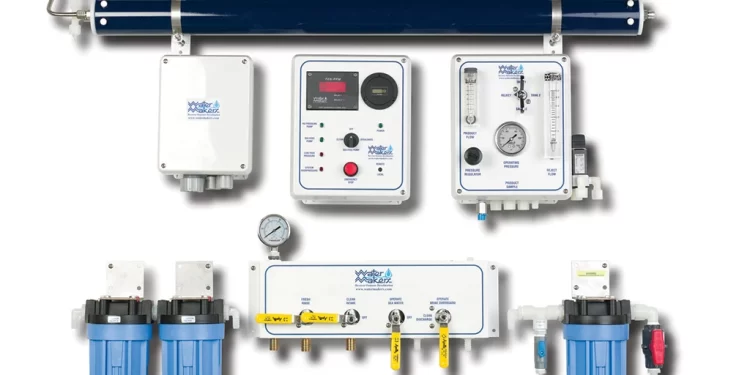
Watermakers' WMS-1000
Watermakers for boats turn seawater fresh.
How watermakers for boats work: the science of seawater conversion, compact and efficient.
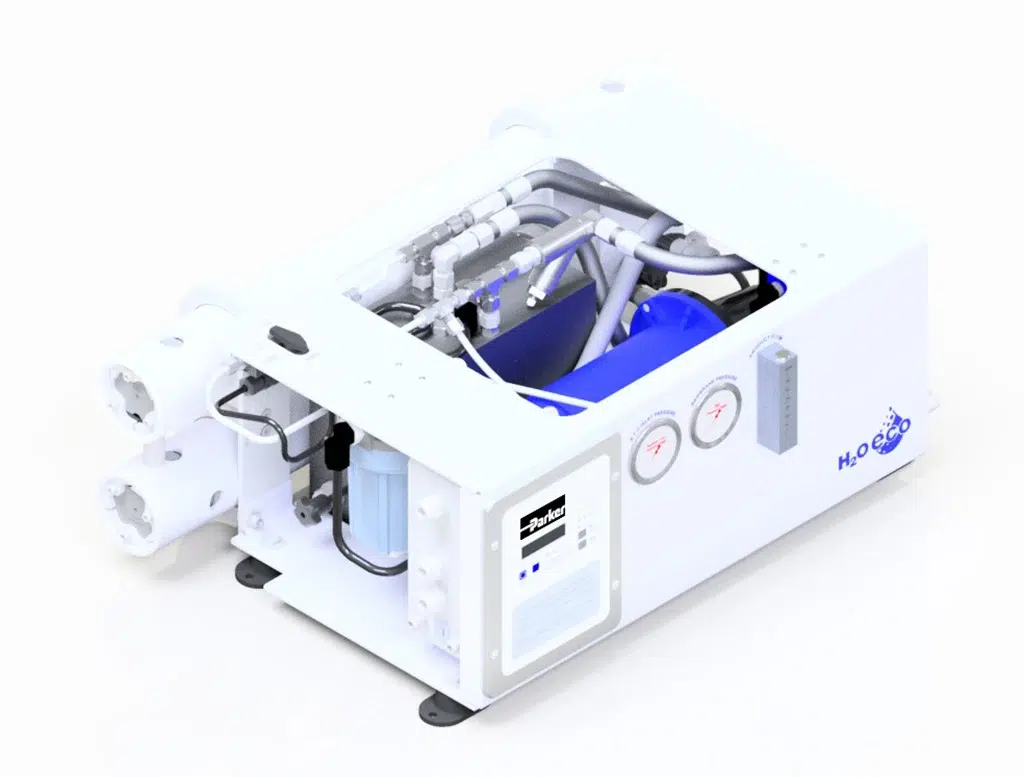
You Get What You Pay For
Choosing the right watermaker for your vessel: what you need to know.
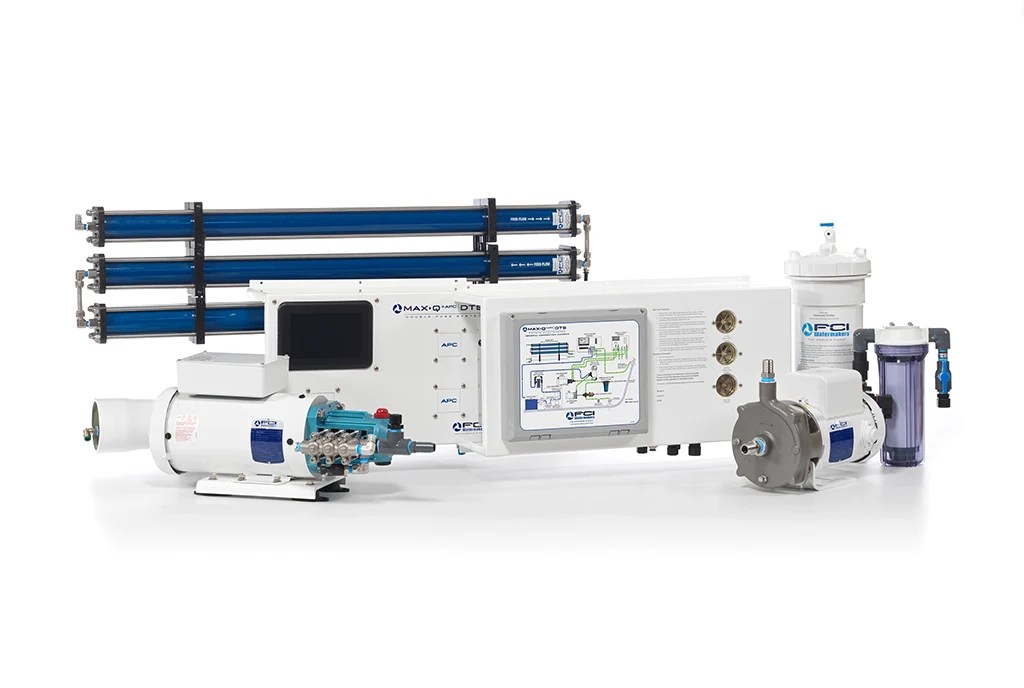
How Do Watermakers Work?
Boxed or Modular
Recommended.
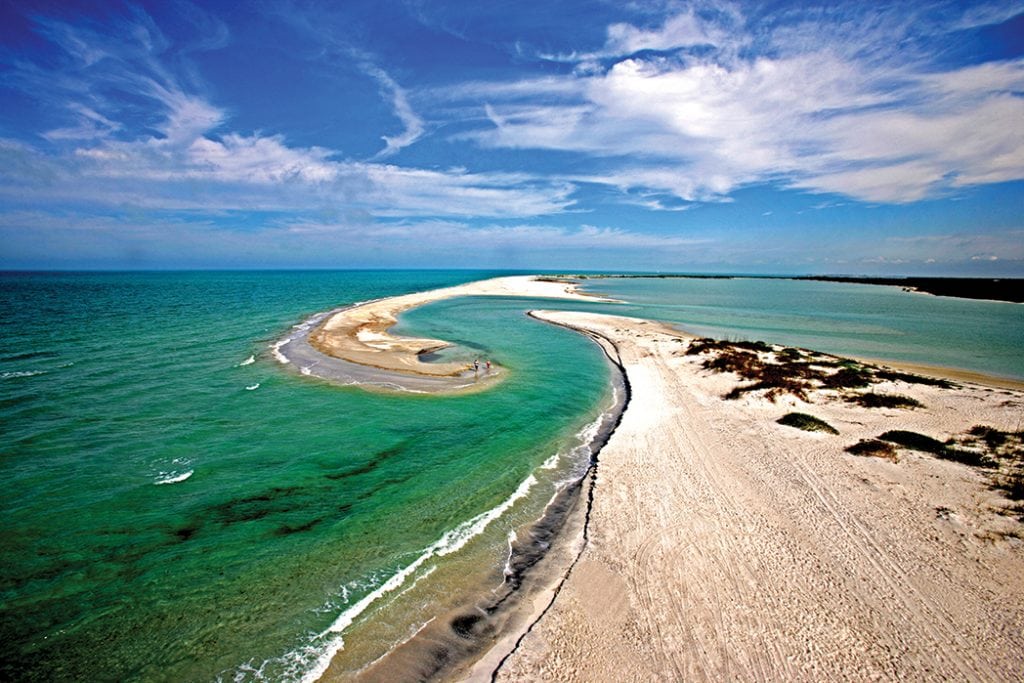
Sanibel and Captiva
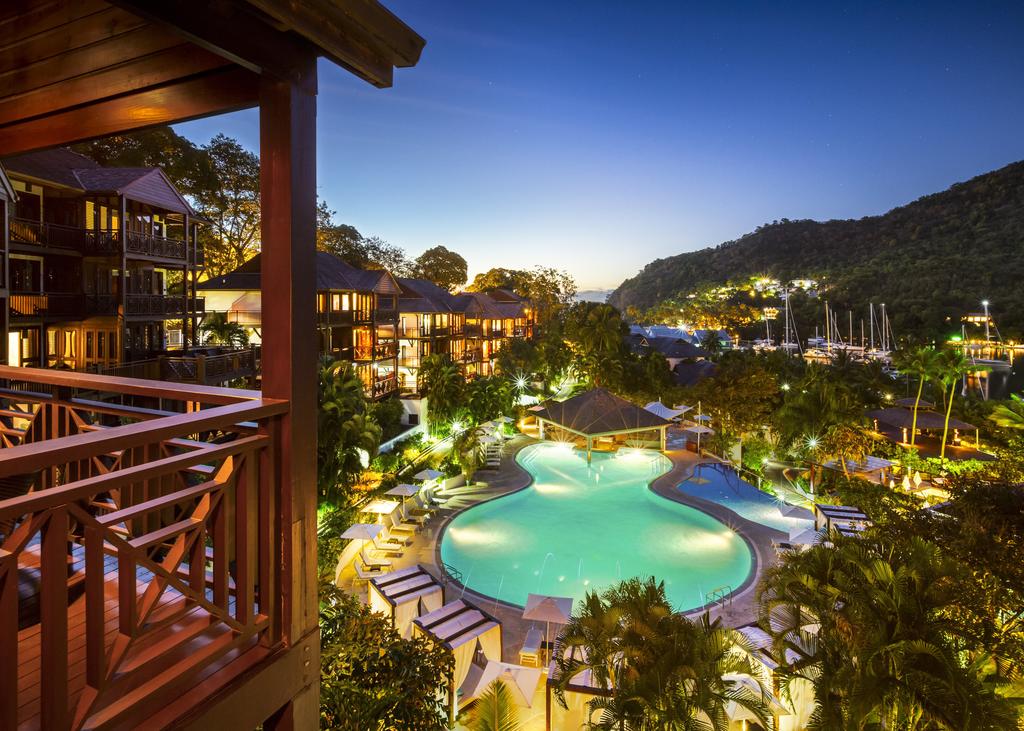
Marigot Bay Marina, St. Lucia
Don't miss it.

Savor the Sweetness: New England’s Maple-Inspired Spring Recipes

Pioneering The Seas: Fearless Women’s Achievements In Sailing

An Expert Cruiser’s Guide To The Turks And Caicos Islands

Regime Change In The Stock Market?

Easy Boat-Friendly Recipes: Enjoy Flavors Of The Island Onboard

Raymarine Announces Trade Up Sales Event
- Privacy Policy

1591 E. Atlantic Blvd, 2nd Floor Pompano Beach, FL 33060 Office: +1 (954) 522-5515 Fax: +1 (954) 522-2260 Contact us: [email protected]
Email address
© 2024 Southern Boating Media

Marine and portable watermakers

Our Company
Innovative watermakers since 1998.
Established in 1998 Schenker is a leading manufacturer of high quality watermakers based on an energy recovery system . Our company owns 4 patents for unique small scale energy efficient solutions.
Schenker Benefits
Why choose us.

80% less power consumption
Energy consumption can be reduced up to 80% compared to conventional systems.

Maximum space saving
An ultra thin design is ideal for space restrictions and provides easy access for maintenance.

Battery power supply
Our watermakers are powered directly from batteries without the need of a generator, our products, marine watermakers.
Schenker watermakers are simple, quiet, compact, efficient and fully automatic. A Schenker watermaker will allow you – whether you own a yacht, a sail boat or any vessel – to extend your cruising duration and increase your independency from marinas, thus enjoying more time at sea. Schenker’s three-years warranty is backed up by our international network of sales and service representatives.
Wiki RANGE: GAL/H 7.9"> RANGE: 30 LIT/H
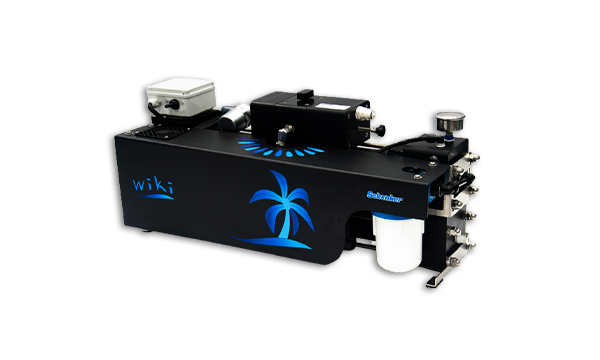
Portable marine watermaker
Zen RANGE: GAL/H 7.9-13.2-26.4-39.6-53-79"> RANGE: 30-50-100-200-300 LIT/H
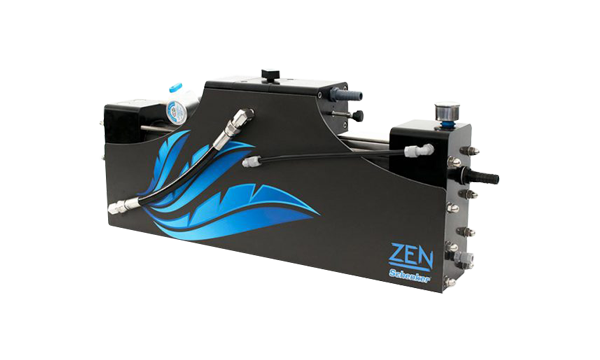
Quiet, small, efficient, inexpensive
Smart RANGE: GAL/H 7.9-15.8-21-26.4"> RANGE: 30-60-80-100 LIT/H
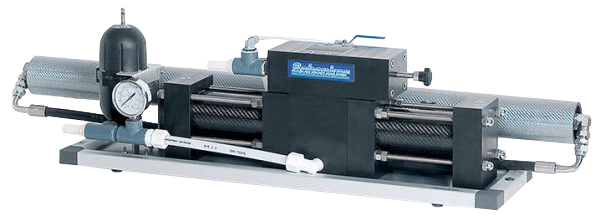
Smart, light and affordable
Modular RANGE: GAL/H 9-15.8-26.4-39.6-61-79-132"> RANGE: 35-60-100-150-230-300-500 LIT/H
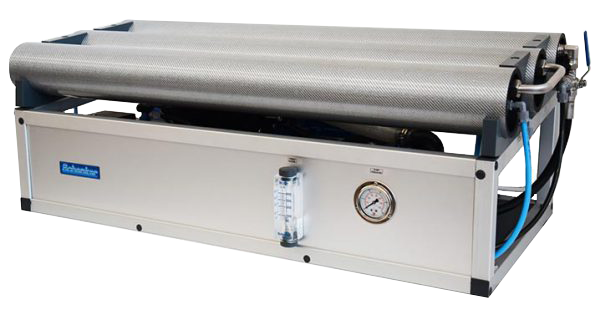
A very compact units for all needs
Our products
Emergency portable solutions.
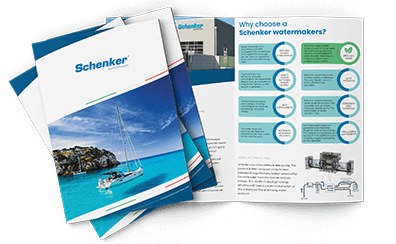
View our products range brochure
Download / View PDF
News & Articles
Share Share Tweet
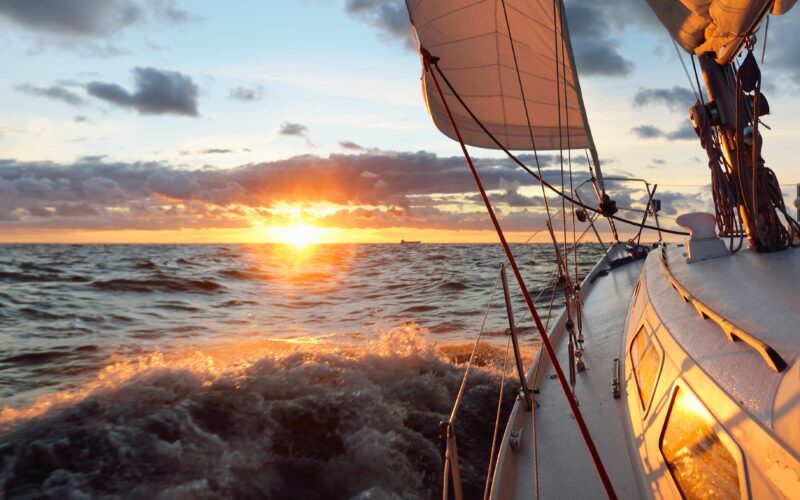
5 reasons why you should buy a nautical watermaker
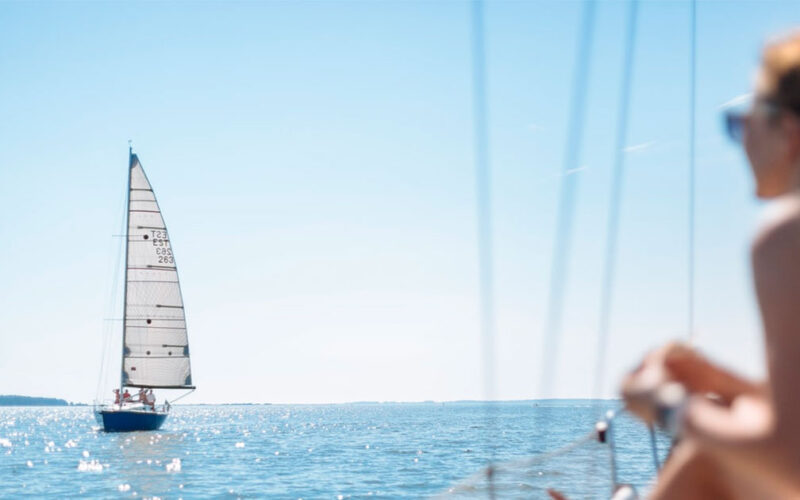
Schenker watermaker benefits: everything you should know
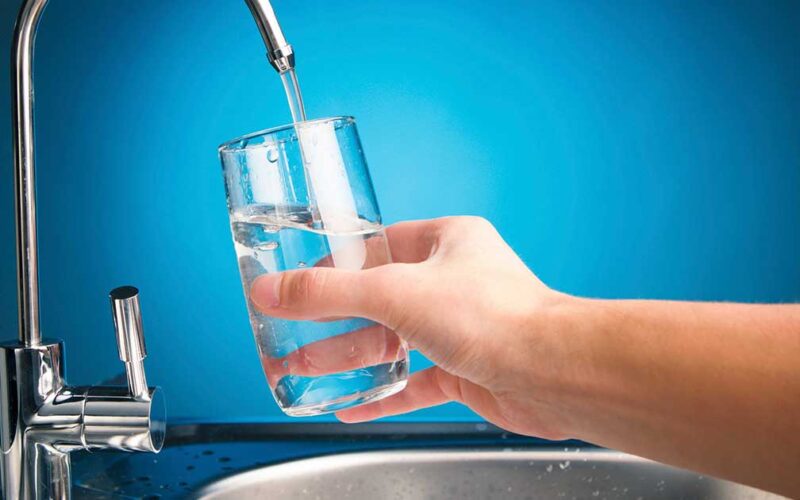
Water purification system: a new eco-product by Schenker Watermakers
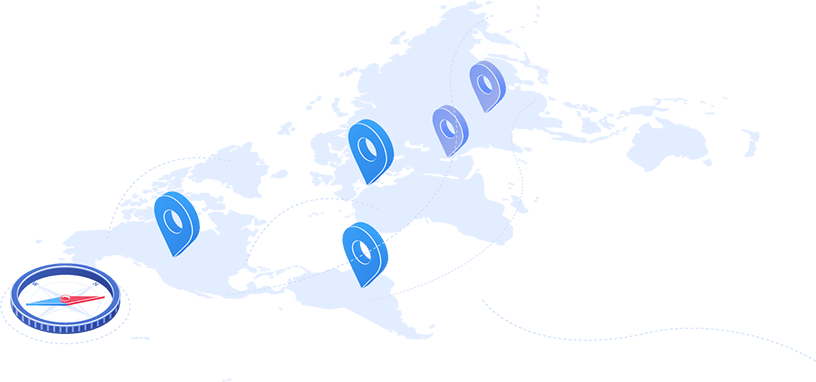
Worldwide dealers
Find schenker dealers near you, send us a message.
Name (required)
Email (required)
Select Your Country (required)
Message (required)
Security check (required)
Dimostra di essere umano selezionando albero .
Pursuant to and for the purposes of articles art. 7, 13 and 15 of EU Regulation 2016/679 I declare that I have read the privacy policy of this site and consent to the processing of personal data to receive the answer to my request.*
Main Office
- sunwatermarine
- Dec 8, 2021
5 Best Watermakers for Sailboats
Last Updated by Daniel Wade, October 1, 2021

With the right Watermaker, the ocean becomes an almost immeasurable supply of fresh and clean drinking water to keep you hydrated during your offshore sailing adventures.
Many sailors do spend a lot of their time and money on various parts of the sailboat including the sails, engine, electronics, and generators especially when preparing for long-distance voyages.
While there's absolutely nothing wrong with this, they often overlook one crucial part of general human survival: having an ample supply of fresh drinking water.
Whether you have freshwater drinking tanks on your sailboat or planning to cruise in areas where you can easily access clean drinking water, the hassle involved in having to come to the dock to fill the water tanks can be quite overwhelming.
This is exactly why you need to find the best watermakers for sailboats.
Like many other nautical technologies, watermakers have significantly advanced in the last few decades to become very efficient and more reliable. They're no longer a luxury on your sailboat but a necessity. Better still, watermakers have become relatively affordable and are meant to keep you hydrated as you explore areas that do not have clean and fresh drinking water.
In this article, we'll take a look at how watermaker systems work, highlight their benefits, and highlight the best sailboat watermakers on the market right now. At the end of this read, you should be able to choose the best watermaker for your sailboat.
Benefits of Having a Watermaker on Your Sailboat
The freedom and security that come with having full water tanks on your sailboat are of immense importance, especially if you're cruising in an area where fresh drinking water is hard to come by and quite expensive when you do. As such, having a watermaker aboard your sailboat is no longer a luxury like it used to be in the past. With a steady supply of fresh and clean water, your life on the sailboat will be a lot better. This is because you'll have enough clean water to drink, cook, wash, and shower, which is beneficial if you want to enjoy your sailing adventures.
Honestly speaking, many sailors do not actually need a watermaker. Well, if you're planning to sail just near the shores, then there's a chance that you can easily access fresh and clean water by the dock. But this can be limiting if you've been dreaming of going off the grid and sailing to some exotic and unknown places in the world.
With that in mind, a watermaker makes a lot of sense to most sailors. You won't have to worry about having to carry aboard gallons of freshwater for cooking and drinking during your voyage. You won't have to treat freshwater as a precious commodity that must last until you can refill at the next port. With a watermaker, you can simply go ocean crossing without worrying about running out of water.
A watermaker allows you to have a steady supply of fresh and clean water to keep everybody well-hydrated and healthy. You can clean the water anytime you feel like and all you have to do is replace the filter once in a while and you'll be good to go. In essence, a watermaker is probably one of the most important equipment to have aboard your sailboat, so installing it is of great importance if you're a serious sailor.
The Basics of Modern Marine Watermakers
Modern marine watermakers essentially follow the principle of reverse-osmosis to produce pure, drinking water from seawater. During this process and through very high pressure, seawater is forced through a semipermeable membrane that only allows freshwater molecules to pass through it but not salt, bacteria, or any other organic material. The newly made pure, drinking water is then piped to the sailboat's water tanks while the leftover (brine) is discharged overboard.
Even though marine watermakers may differ in the type of pump that's employed and how it is driven, this is one of the most important features in every watermaker. In most cases, water can be electrically pumped or powered directly off the boat's engine. If you have an AC generator or alternator on your boat, it would make much sense to use the AC output to drive the watermaker directly. You can also choose the DC-powered models if you rely on renewable energy from solar or wind. Alternatively, you can still go for AC-powered watermakers but you'll have to buy an inverter.
All in all, DC-powered watermakers are more efficient since they integrate a power-saving energy recovery system (ERS). You must, however, keep in mind that your energy consumption levels might be quite high if you're sailing in colder and saltier areas. This is because the water purification process might be a bit slower in such areas. As such, you should consider investing in a more high-powered watermaker system if you will be sailing in colder and saltier areas than if you're planning to sail more in warm and less salty areas.
As far as an engine-driven watermaker is concerned, you should mount the high-pressure pump on the engine so that it can be belt-driven using an automatic clutch. An engine-driven watermaker should be your first option if you want large quantities of fresh drinking water. This is more productive than AC or DC-powered watermakers. Even with a relatively small engine, this setup has an automatic regulator that constantly pumps the water. With that in mind, engine-driven watermakers are ideal if you want to reduce your energy consumption. To put it into perspective, an engine-driven watermaker can lower energy consumption by an enormous 80%, especially when compared with conventional AC or DC-powered watermaker systems.
How to Choose the Best Watermaker for Your Sailboat
There are many factors to consider when looking for the best watermakers for your sailboat. Here are the most important things to consider.
Your Freshwater Needs
One of the most important things to consider before spending your money on a watermaker is your freshwater needs. What quantity would be enough to keep you going on your sailing adventure? While the quantity might differ from one sailor to the other or from one boat to the other, you should consider the number of gallons that a particular watermaker can produce per day. This will help you in choosing the ideal watermaker; a model that will ensure that you never run out of water. Do not underestimate your water needs, especially if you're planning to sail with your children or if you're planning to stay on the boat for an extended period of time.
Do you have enough space on your vessel to accommodate the type of watermaker you're looking to buy? While most watermakers are designed to fit in the smallest of space, you should consider the actual size of the watermaker and find out whether you have enough space on your vessel to fix it.
Watermakers can run on electricity, renewable energy such as wind and solar (if you have them on your vessel), or both. When looking for the perfect watermaker, you should consider how to power it and whether or not the watermaker has low-energy consumption, which is definitely a great feature. Again, there are also engine-driven watermakers, so it's important to know exactly what you're going for.
Maintenance
Watermakers have a reputation for being difficult to maintain. Fortunately, the equipment and components have improved in the last few years so you should go for a model that's easy to maintain. You should use the watermaker in water bodies that look good, You should avoid using the watermaker in dirty harbors as you may have to change the filters every so often or even damage your watermaker altogether.
Best Watermakers for Sailboats
Let's take a look at the best watermakers available on the market right now.
The Ultra Whisper

Engineered by limited electrical options that can run on either DC or AC, THE Ultra Whisper by Sea Recovery is one of the best watermakers currently available on the market. In addition to being very quiet, this watermaker features an automatic operation that requires very minimal operator adjustment.
This watermaker is ideal for small powerboats and sailboats since it can serve as an efficient water supply. This model boasts about a 75% reduction in power consumption, especially when compared to other models.
Smooth and quiet water production
Can produce up to 2,280 liters per day
Ideal for small boats
It is energy efficient
It might not be perfect for large boats
Echotec Watermaker

If you want a watermaker model that can produce 60 liters per hour flawlessly and with no maintenance apart from changing the filters, look no further than the Echotec Watermaker. This model is designed for ultra-reliable performance and easy customer installation.
This watermaker is made from high-quality components that can withstand the continuous harsh marine environment, making it one of the most durable watermakers on the market. This is essentially a series of modular watermakers ranging from 12-volt to 24-volt DC-powered models. They bring forth energy efficiency, a computerized energy recovery system, and ultimate reliability to ensure that you never run out of fresh drinking water while out there on the sea.
Energy efficient
Cost-effective
Comes with a very low speed
Not ideal for large boats
Spectra Katadyn PowerSurvivor

As a compact and energy-efficient watermaker, the Spectra Katadyn PowerSurvivor is arguably the most affordable watermaker currently available on the market. We are talking about a model that only requires 4 amps to desalinate water for your sailboat. It can produce 1.5 gallons of fresh drinking water per hour, which is an excellent return for a watermaker of its size.
It is also one of the most portable watermakers around. You can choose to either install it permanently or temporarily in case you want to take it somewhere else. This portability is also essential if you're looking for a space-saving model that can fit in the smallest of compartments. Its simple but rugged design is essential in ensuring that it can perform at its best even in harsh marine conditions. In terms of its power capabilities, this is the only model on the market that will convert to a hand-operated system or manual power if there's a power shortage.
Portable and lightweight
Rugged design to withstand harsh marine environments
Efficient and reliable
Can revert to manual power if there's a power shortage
Perfect for off-grid sailing
Gasoline or diesel can easily damage the semi-permeable membrane
Village Marine - Little Wonder Series

Whether you're looking for a watermaker for your small sailboat or looking for a watermaker that can efficiently serve those huge yachts, the Village Marine Little Wonder Series provides everything. This model is meant for experienced sailors who are looking for various capacity options. This watermaker weighs just about 69 pounds but can produce nearly 180 gallons of fresh drinking water each day.
Designed with a low RPM high-pressure pump, this model remains one of the most efficient and economical watermakers on the market. That's not all; this watermaker is designed with corrosion-resistant features and is one of the most serviceable watermakers in the game. It is reliable, quiet, and portable; all factors that make a watermaker great.
Easy to operate
Corrosion-resistant
Easy to maintain
Quiet and versatile
It doesn't have automatic adjustment controls
Ventura 150 Watermaker

This is one of the most versatile watermakers on the market. It can use both electricity and renewable energy. This model is engineered to be lightweight and energy-efficient and its compact and modular design makes it a great option if you're looking for a watermaker that's easy to use and install in confined spaces.
The Ventura 150 watermaker is highly efficient as it can produce over 6 gallons of water an hour, which makes it quite perfect for small vessels. This sailboat watermaker features a controller that allows you to operate and monitor the device remotely. It also has the auto store button that will automatically flash the system after every five days.
This watermaker is quiet and surprisingly compact despite its ability to produce about 150 gallons of water per day. It also gives you the option of going for the automated manual or manual model.
Very versatile
Can use both electricity and renewable energy power
It is smooth and quiet
It is compact and lightweight
The manual model has analog controls
To this end, it's easy to see that having an ideal watermaker aboard your vessel is one of the first crucial steps towards being self-sufficient and sustainable. With a watermaker, you'll be able to access fresh drinking water at all times when sailing even in far-flung places. Most of these models are well-constructed and incorporate some of the best technologies that make them efficient, reliable, and easy to install, use, and maintain.
So when it comes to choosing the best watermaker for your sailboat, it may all come down to what is ideal for you in terms of energy consumption, efficiency, the quantity of water produced, among many other things. With an ideal watermaker, you can remain off the grid for as long as you want without ever worrying about running out of water and this is of great importance in enjoying your sailing adventures.
Recent Posts
James Richmond on bluedotliving.com
Flanigan's Eco-Logic Convo Featuring James Richmond
Horsepower VS. Torque
Watermakers
Blue Water Desalination offers six distinct lines of watermakers to suit the needs of the most discerning mariners, from the day fisherman up to the long-range sailor and transoceanic yachtsman. Within the six lines, we offer dozens of models of varying capacities in both frame and modular style configurations along with high-output commercial systems that can be custom designed for many different applications.
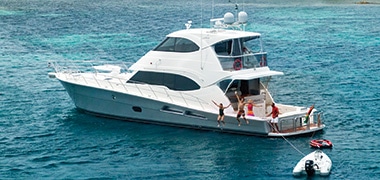
- Fresh Water Flush system
- High Rejection membranes
- Quiet and reliable high pressure pumps
- Product water Carbon filter
- Dual voltage 50/60 Hz motors
- Stainless steel booster pump shaft
- Designed for ease of service & maintenance
- Installation kit including bronze sea strainer
- No charge upgrade to Commercial Pre-filter**
- No charge Oil/Water Separator assembly available**
Our Products
- Legend LX Series
- Legend Series
- Explorer LX Series
- Explorer XT Series
- Explorer Series
- Express XT Series
- Express XT DC Series
- Express Series
- Express ClearMate
- ClearMate Mobile
- Product Brochures
- Product Drawings
- Care & Maintenance
- Replacement Parts
- Videos & Media
Dealers by Region
- United States
- Mexico & Central America
- South America
- South Pacific
- Middle East
- Portable and Installed Watermakers
- FIND A DEALER >

- AC Electric
- Petrol (Gasoline)
- 12VDC Electric
- Control Panel
- Autoflush System
- Plumbing Install Kit
- Hydrotester
- Prefilter Cartridge
- Pickling Solution Mix
- Lift Pump Impeller
- RO Membranes
- High Pressure Hose
- Case Studies
- Testimonials
- Applications
- Desalination Theory
- Detailed Schematic
- Dealers List
- Dealers Map
- OEM Partners
- Troubleshooting
- Installation
- Manuals + Downloads
- Sales Enquiry
- Support Request
Fresh water anywhere
AC ELECTRIC, PETROL (GASOLINE), and 12VDC ELECTRIC WATERMAKERS. PORTABLE and INSTALLED MODELS AVAILABLE.
AC ELECTRIC , PETROL (GASOLINE) , and 12VDC ELECTRIC WATERMAKERS . PORTABLE and INSTALLED MODELS AVAILABLE.

no power source required
Petrol (gasoline) watermakers.

230V/50HZ or 115v/60hz
Ac electric watermakers.

12VDC power source
12vdc watermakers, rainman watermakers, a fresh approach to saltwater desalination. .

The Rainman Advantage

VERSATILITY
Rainman watermakers can be easily transferred between boats or used in remote land based applications. Keep your watermaker when you change your boat.

RELIABILITY
Partnering with the best companies for components, Rainman watermakers have a very high quality build, ensuring reliability and longevity of your investment.

LIFE CYCLE COST
With modest initial investment and components designed for durability and easy maintenance, the overall life cycle cost of a Rainman watermaker is kept to a minimum.

GLOBAL SUPPORT
A global network of over sixty dealers are in place to ensure you have support in the far corners of the world. Routine consumable parts are non-proprietary and easily sourced.
- MarketPlace
- Digital Archives
- Order A Copy

Building your own watermaker
Modern technology has brought us many new devices that make the cruising life much safer and easier. Since we are not interested in camping out while cruising, obtaining safe and clean fresh water has always been a major priority, especially overseas. The three most common ways of obtaining fresh water on a cruising boat are: 1) an effective rain collection system, 2) from shore via a hose, or 3) a watermaker. Given reasonable storage capacity and a good filtration system, a high-capacity watermaker is the most efficient — especially if you are a boonies cruiser.
A reverse-osmosis watermaker takes clean seawater and, by pushing it through a specialized membrane (special filter) at relatively high pressure, makes fresh water. This means that no longer do we have to carry hundreds of pounds of extra fresh water just to ensure we don’t run out. Also, we no longer must get up in the middle of the night to catch rainwater, or search out places ashore where we can jerry-jug water from sometimes expensive or suspect sources.
Watermakers suitable for use on a cruising boat can be obtained from a number of sources depending on your budget and tolerance for electronics gadgetry. But they all do the same thing: make fresh water from seawater. We think that if you are going to have a watermaker aboard, it should have bulletproof — and mainly mechanical — equipment with minimal electrical and electronic parts; use commonly available (not proprietary) components; make the most water practical in the shortest time (40 gallons per hour is our choice); and be repairable with onboard spares, tools and skills.
As an example, we use about 50 gallons of fresh water a week for daily cooking, drinking, showering and cleaning. A 40-gph watermaker with two 40-inch membranes can make that in one and a half hours with setup and flushing time included. Smaller units can take significantly more time to do the same work, thereby seriously affecting a cruiser’s free time.
An engine-driven pump Because the power needed to run this volume through the membranes is more than 2 hp and a 12V motor won’t handle that, we have chosen to belt our watermaker pump to our main engine on our last two boats. This is similar to an alternator arrangement. You can drive a watermaker pump with a generator, but using only a generator puts another expensive, sometimes cantankerous and complicated piece of mechanical/electrical equipment between you and fresh water. If the generator fails, as they sometimes do, you are back to spending hours per week manually collecting fresh water from rain or shore.
We most often run the watermaker when underway and moving the boat. Infrequently, we run it at anchor and sometimes just flush it with fresh water to satisfy the once-a-week run requirement that prevents biologic buildup on the membranes.
We average less than 10 hours per year in the tropics using the engine just to operate the watermaker.
If you decide to make your own watermaker, there are several sources of information on the Internet, including my guide. Fifteen years ago, it took me quite a bit of time to engineer the specifications, develop a parts list, and then find and purchase the equipment. By that time, I had seen two successful DIY units, so I knew it could be done. I used a mix of some used and some new parts, mainly because I was on a tight budget. Since then, I have refined the unit somewhat, installed two units on our boats and helped several other cruisers do their own using my information.
Extensive engineering details are on our website under “CSY Workshop,” and we have a PowerPoint slideshow in our “Presentations” section. There is also a Seven Seas University webinar I did for SSCA a couple of years ago, with the slideshow narrated.
Better than the WHO standard My first unit on Soggy Paws , our CSY, was still in service after eight years when we sold the boat in 2016. It had the original pumps, membranes and fittings, and was belted to our 60-hp Perkins. It was still producing fresh water that tested to about 250 ppm (parts per million solids content). The World Health Organization standard is 500 ppm.
Because I was careful never to run my watermaker in dirty or silty locations, in addition to having two pre-filters, I never had to clean the membranes in eight years.
The second installation on our catamaran is now belted to a 27-hp Yanmar 3GM30. It has a different mounting configuration, and after four years of use still produces water at less than 200 ppm. There are many ways to mount a pump to an engine; you just need to be able to tightly tension the belt drive around the crankshaft pulley. You want to use an appropriately sized pulley to run the watermaker at near full rpm from an engine running around 50 percent of its maximum rpm.
Once you have all the parts, any competent cruiser should be able to install a watermaker in a week. It took me two weeks — but then I never claimed to be competent, just thorough.
As with ground tackle, we think bigger is better, within reason. So if you don’t have a watermaker yet, consider easing your cruising workload and making the crew happy by obtaining a watermaker. Then you can wash dishes in fresh water, take freshwater showers every day, and not worry about using too much water — just like normal people.
Dave McCampbell is a retired U.S. Naval diving and salvage officer with over 40 years’ cruising and eight sailboats’ worth of maintenance experience. He and wife Sherry, currently cruising in Southeast Asia, spent eight years crossing the Pacific via Easter Island, Hawaii and Micronesia. Prior to that, they circumnavigated the Caribbean over four years. Their most recent excursion was a 7,000-nm journey from the Philippines to the lower Solomons via eastern Indonesia and Papua New Guinea. Four years ago they sold Soggy Paws , their CSY 44 monohull of 19 years, and moved to the “enlightened side,” purchasing a new Soggy Paws , a St. Francis 44 catamaran. Their extensive website is at SVSoggypaws.com .
By Ocean Navigator

IMAGES
VIDEO
COMMENTS
Spectra Katadyn PowerSurvivor. As a compact and energy-efficient watermaker, the Spectra Katadyn PowerSurvivor is arguably the most affordable watermaker currently available on the market. We are talking about a model that only requires 4 amps to desalinate water for your sailboat.
The best sailboat watermakers for liveaboards. The Rainman naked 12V watermaker is a great option for anyone looking for a compact, efficient way to produce fresh water. The unit is simple to set up and use, and it produces up to 30 litres of fresh water per hour for a smaller unit, or up to 140 litres per hour for a larger one.
Watermakers also come in all shapes and sizes, with modular options best suited for smaller boats, as the parts can be "stashed" in whatever precious extra cargo space is available. Best Marine Watermakers. Let's take a look at a roundup of some of the best boat watermakers on the market right now for your vessel. The Ultra Whisper
1. Katadyn Power Survivor 40E Watermaker Desalinator. Small yet powerful, the Katadyn Power Survivor 40E is a reliable workhorse designed for boats with a small crew population of 2 to 3. This modular unit provides 1.5 gallons of water per hour, and draws only 4 amps from a 12-volt system, making it one of the most energy efficient desalinators ...
A watermaker on a yacht converts seawater into fresh water through a process known as reverse osmosis (RO). A high-pressure pump pushes seawater through a semi-permeable membrane that filters out salt, organics, and bacteria. The fresh water is pumped into your water tanks while the remaining brine bi-product is discharged over the side of the ...
Since all of the watermakers that are currently available for cruising sailboats use this process for desalination, the major differences between the systems are how you power the high-pressure pump and the user interface. Powering options include 120/220-volt AC, 12- or 24-volt DC and engine/belt driven. All have their pros and cons.
Welcome to SeaWater Pro, the premier provider of high-quality watermakers for boats and portable watermakers for all your marine adventures. Our cutting-edge technology and reliable products will ensure that you have access to clean, purified seawater wherever you go. With our easy-to-use and reliable watermakers, you can say goodbye to bulky storage tanks or worry about running out of fresh ...
The lower demand on the pump means it can be reasonably powered by 12V with as little as 9A, and can produce a litre of water with just 4-5Wh of energy. High-pressure units need between two and three times that energy per litre. If you run your boat from solar panels or don't have a generator, this is the type of watermaker to go for.
In terms of installation, the kinds of watermakers that work best with the typical small or mid-size cruising sailboat are those that are fully modular—i.e., in which the filters, strainers, pumps and semi-permeable membrane are all installed separately in whatever kind of an arrangement suits your boat best.
In our tests, its 1/18-hp. motor drew 4.8 amps, producing about 1.6 gallons per hour, consuming 39 watts per gallon of water. It is very compact, and like all PUR watermakers, easy to service and operate. At 72 dB, its noise level was the equivalent of the quieter large 12-volt machines.
The best-selling watermaker for cruising sailboats. Small and quiet, it can be mounted almost anywhere simply tee into any existing seawater source such as engine intake, galley, etc. Its compact, simple design and stainless steel construction ensures reliability and low maintenance. In an emergency, the 40E can be operated manually (handle ...
Desal systems suitable for recreational cruising range from $3,500 to $11,000, with the price difference based mostly on the production. A few portable systems are priced as low as $1,200, but their output won't do the job for more than basic needs for a couple aboard. We'll look at some of those available in Part 2.
Katadyn-owned Spectra produces a wide range of watermakers, from the hand-operated Survivor 06 to a commercial AC model capable of producing 10,000 gallons per day. The most suitable units for cruising yachts are its DC/AC-powered Ventura, Catalina and Newport models, offering production rates of between 6.3 and 41gph.
The ideal watermaker should provide the daily fresh water demand of the boat in about 3-4 working hours. On his turn, the daily fresh water demand is based on the number of people onboard and the type of boat. The typical fresh water demand in a sailing boat if about 30-40 lit/day, whereas it is 50 -60 lit/h in a power boat or catamaran.
Water output requirements: How much water you need the water maker to produce. Power source availability: Whether there is a power source available to power the water maker. We also carry portable watermakers and aim to provide boat owners continuous clean water access with our high-quality desalinators for boats and raw water strainers.
Parker Hannifan H20 ECO. Most boats 40 feet and longer will use watermakers run with AC-powered pumps; however, DC-powered watermakers are used on smaller powerboats and sailboats. AC-powered systems deliver a more constant flow rate and higher pressure over a longer period, while DC systems are for boats with less demand and smaller tanks.
A Schenker watermaker will allow you - whether you own a yacht, a sail boat or any vessel - to extend your cruising duration and increase your independency from marinas, thus enjoying more time at sea. Schenker's three-years warranty is backed up by our international network of sales and service representatives. RANGE: 30 LIT/H.
How to install a DIY watermaker: https://youtu.be/BOdRNNPina0***Update 2021/11/16***It's been over two and a half years since we installed our watermaker. It...
Last Updated by Daniel Wade, October 1, 2021With the right Watermaker, the ocean becomes an almost immeasurable supply of fresh and clean drinking water to keep you hydrated during your offshore sailing adventures.Many sailors do spend a lot of their time and money on various parts of the sailboat including the sails, engine, electronics, and generators especially when preparing for long ...
Blue Water Desalination offers six distinct lines of watermakers to suit the needs of the most discerning mariners, from the day fisherman up to the long-range sailor and transoceanic yachtsman. ... Discover Boating Miami International Boat Show; Locate a Dealer. Find a Certified Blue Water Desalination Sales or Service Representative Near You ...
Spectra Ventura 150 Deluxe 12v/24vDC 6.3GPH Marine Watermaker VT150D. VT-150-D. Find the best prices online on all Spectra Watermaker systems at Seatech Marine Products, Inc. We offer professional technical support and customer service on all brands of watermakers.
Rainman Watermakers are a compact system designed to generate a fresh potable water supply from seawater. They can be installed in a minimum footprint configuration or kept portable for maximum flexibility. We use only top quality components in the build process from the best manufacturers: Honda, General Pump, Filmtec, and Noshok. Our filters ...
The three most common ways of obtaining fresh water on a cruising boat are: 1) an effective rain collection system, 2) from shore via a hose, or 3) a watermaker. Given reasonable storage capacity and a good filtration system, a high-capacity watermaker is the most efficient — especially if you are a boonies cruiser.